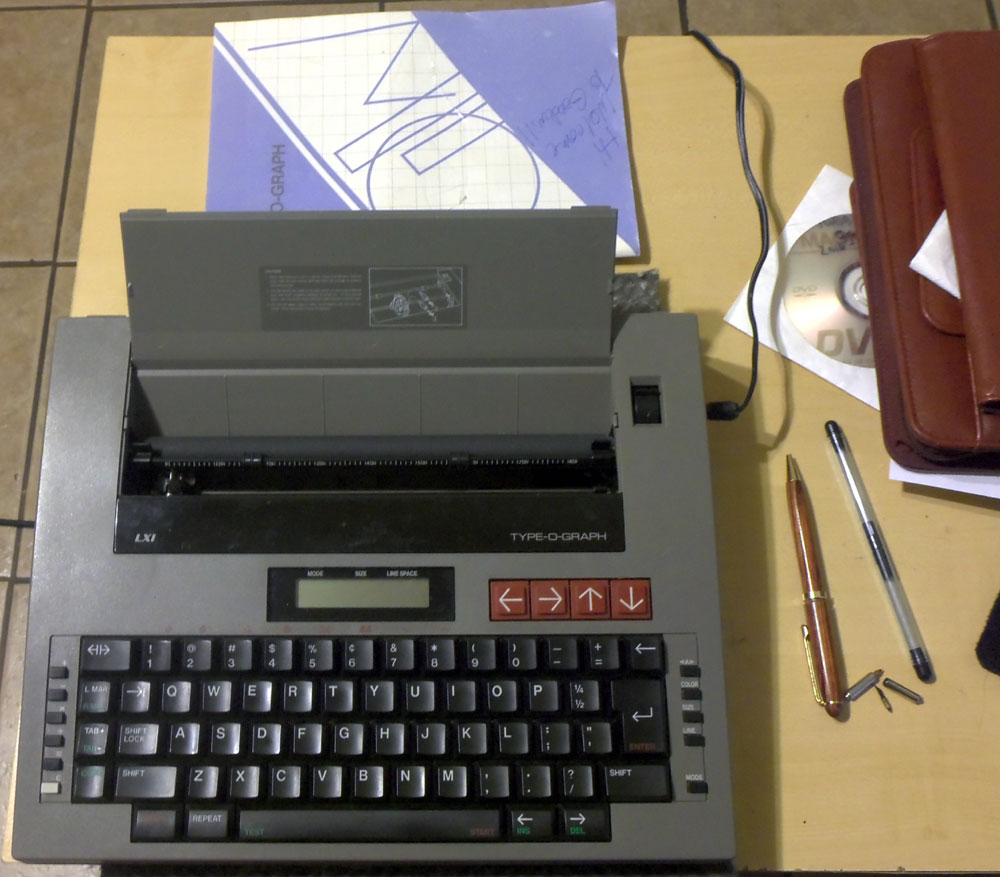 You know, there’s just something that really jazzes me about these little Brother mini-typewriters from the early 1980’s – maybe it’s the inventiveness that Brother showed in trying out so many really unique ways of re-engineering the mechanics of the way a typewriter works – that kind of inventiveness in the typewriter industry really only happened in the very beginning. Here’s another one of those tried-and-failed experiments, the 1984 Brother BP-30 Type-O-Graph.
You know, there’s just something that really jazzes me about these little Brother mini-typewriters from the early 1980’s – maybe it’s the inventiveness that Brother showed in trying out so many really unique ways of re-engineering the mechanics of the way a typewriter works – that kind of inventiveness in the typewriter industry really only happened in the very beginning. Here’s another one of those tried-and-failed experiments, the 1984 Brother BP-30 Type-O-Graph.
Found yesterday at Goodwill for $6.99, I said yes to it mainly because we don’t already have one represented in the TWDB, and besides it came with its user manual and the same wall wart power cord that works with all the 1980’s-era Brother mini-wedges. I was frankly dubious of the pen-tips, not manufactured since the 80’s, and made of pure unobtanium now. I didn’t think I’d be able to get it to type, but I was curious exactly how it did work. I knew that the BP-30 was some sort of mini-pen plotter, but exactly what it did, I had no idea.
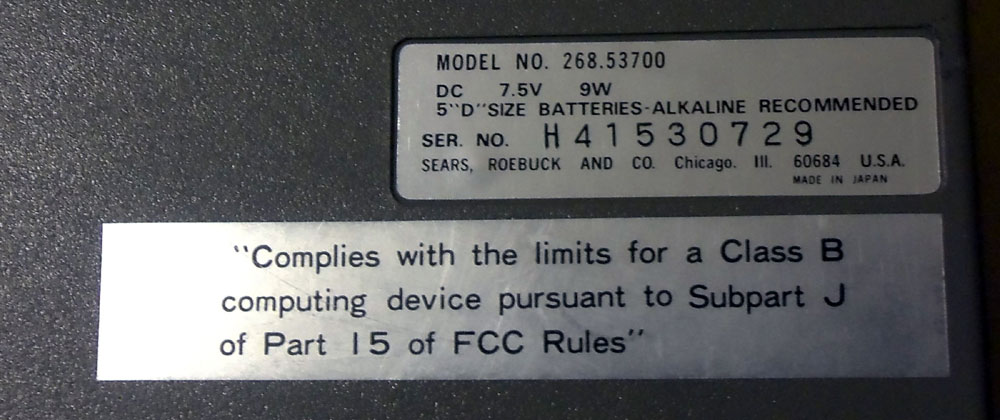 Once I had it home, I took stock of what I had to work with: the plotter head, a rotating cylinder very much like a revolver, held 4 pen tips in its chambers. They were all dry, as were the two spare tips in a plastic tube clamped to the case lid. Well, at least I had *something* to work with. I examined them and found that with a little light wrenchwork, I could disassemble them. That meant I could try replacing the crusty old ballpoint tops with something… let’s say “repurposed” for the task.
Once I had it home, I took stock of what I had to work with: the plotter head, a rotating cylinder very much like a revolver, held 4 pen tips in its chambers. They were all dry, as were the two spare tips in a plastic tube clamped to the case lid. Well, at least I had *something* to work with. I examined them and found that with a little light wrenchwork, I could disassemble them. That meant I could try replacing the crusty old ballpoint tops with something… let’s say “repurposed” for the task.


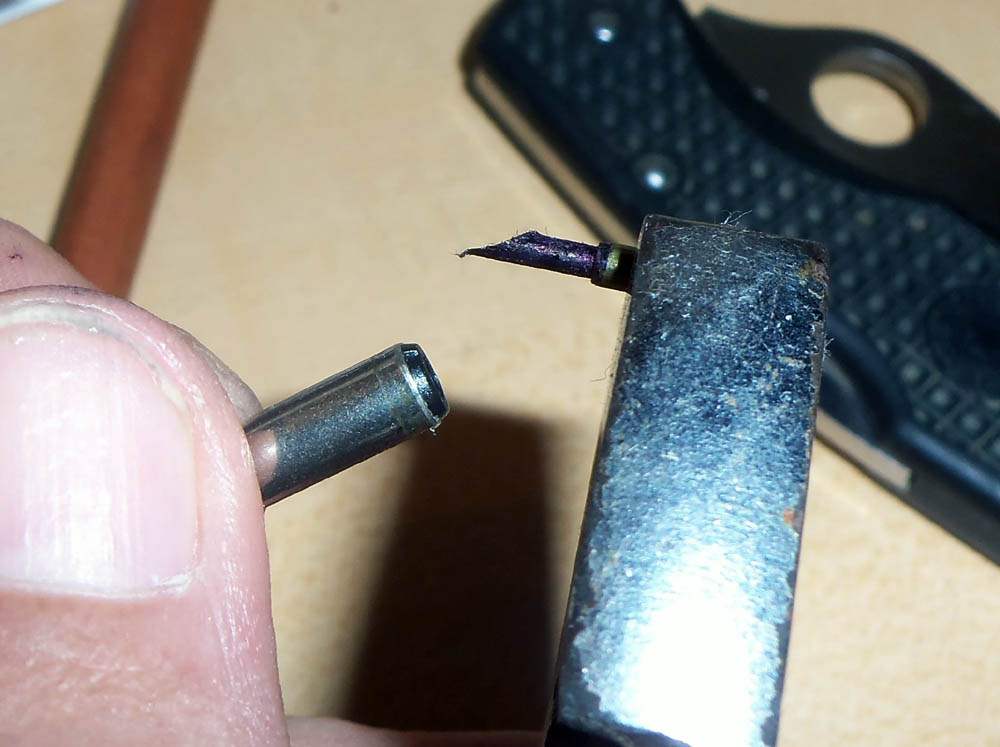
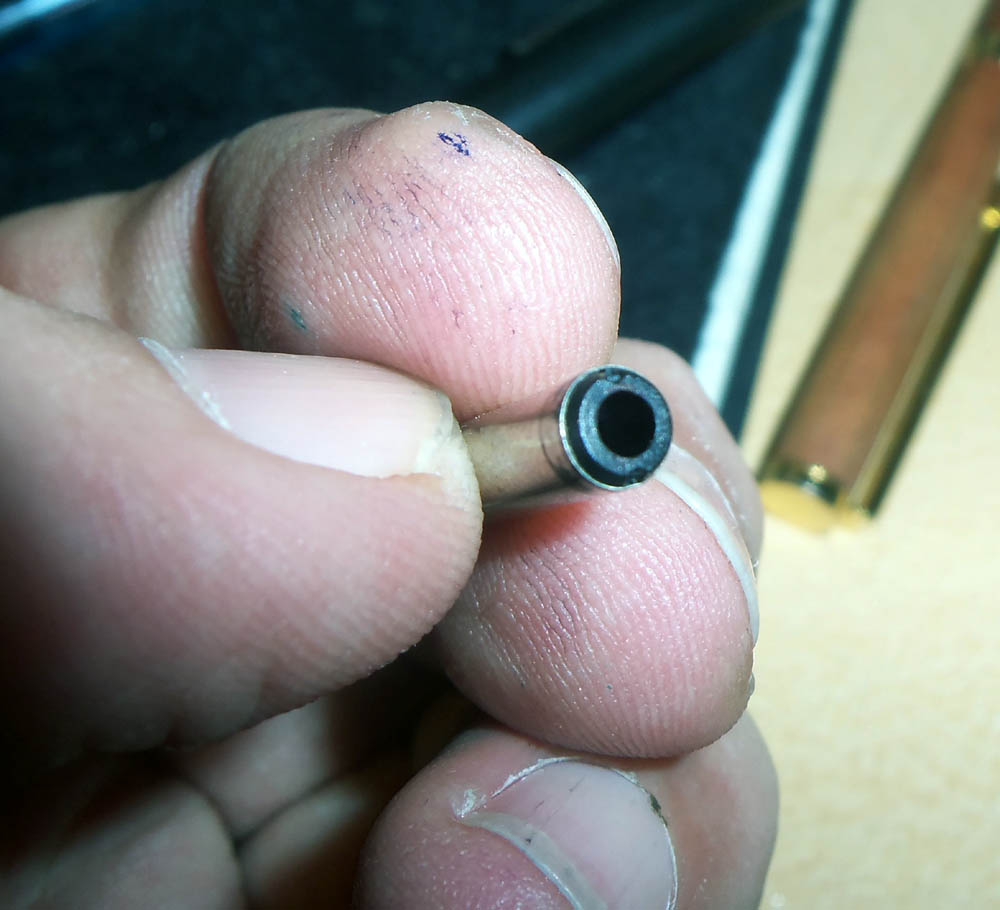 Inside the tip, once you pull the ball-point out, there’s a plastic plug which you can also pull out (or not – depends on what you’re going to try), and inside is a wad of cotton full of dried ink. Fish the cotton out and toss it.
Inside the tip, once you pull the ball-point out, there’s a plastic plug which you can also pull out (or not – depends on what you’re going to try), and inside is a wad of cotton full of dried ink. Fish the cotton out and toss it.
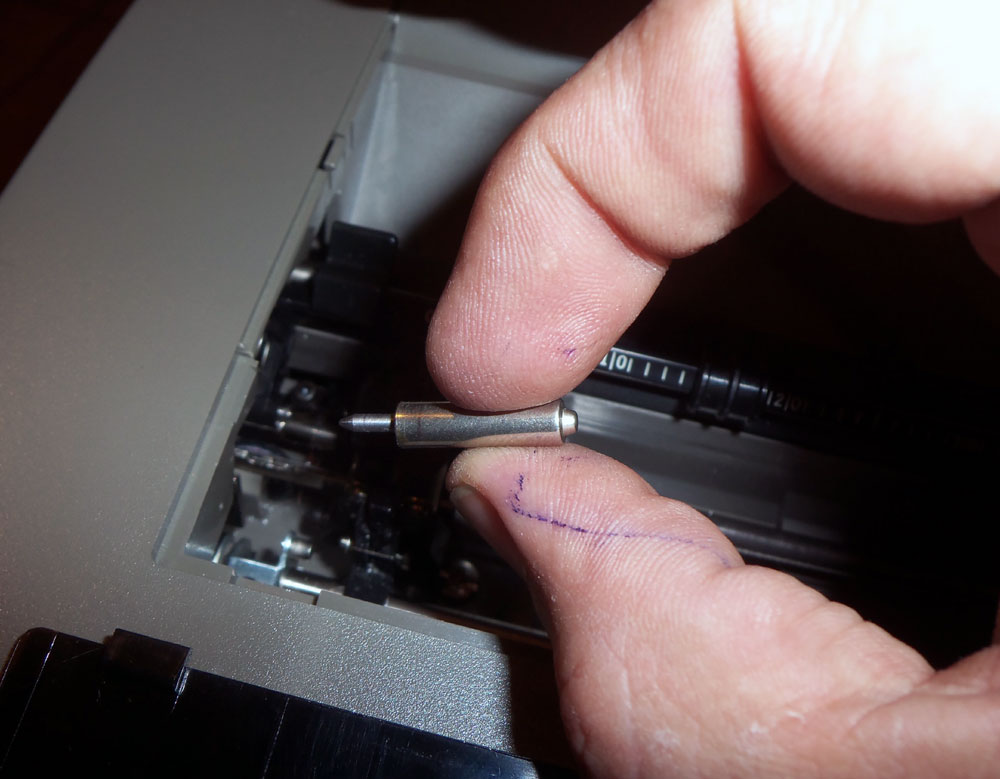 In my first attempt, I pulled out the plastic plug (and immediately lost it – 1 of 6 down) and I cut down a brass Mark Cross pen refill (use a brass-shaft one, not plastic – you want to be able to pinch the cut-off end shut to keep the ink in) and stuck it in the empty pen casing. The pen tip is skinnier than the original one, so it fits kind of sloppy – and that shows in the result, but IT WORKS!
In my first attempt, I pulled out the plastic plug (and immediately lost it – 1 of 6 down) and I cut down a brass Mark Cross pen refill (use a brass-shaft one, not plastic – you want to be able to pinch the cut-off end shut to keep the ink in) and stuck it in the empty pen casing. The pen tip is skinnier than the original one, so it fits kind of sloppy – and that shows in the result, but IT WORKS!
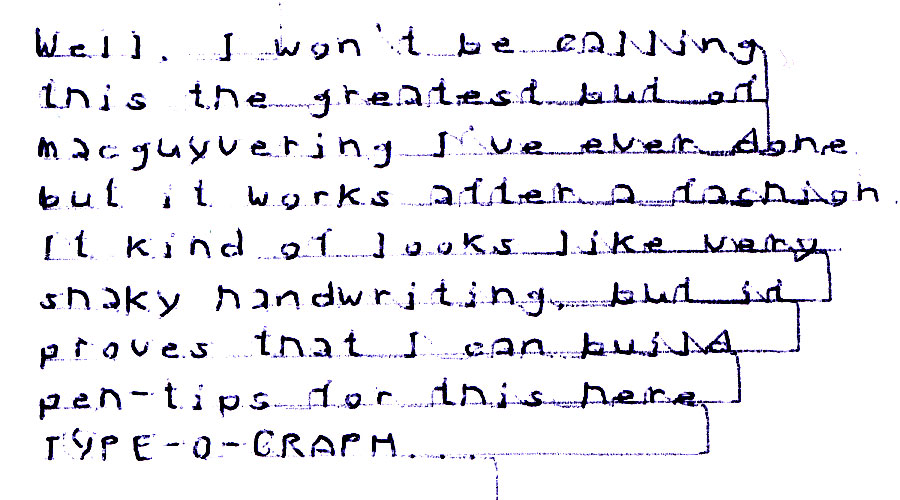 Well, that’s fine if I want my typing to resemble the scrawlings of a 5-year old, but I think I can do better. Let’s try a felt-tip in cartridge #2:
Well, that’s fine if I want my typing to resemble the scrawlings of a 5-year old, but I think I can do better. Let’s try a felt-tip in cartridge #2:
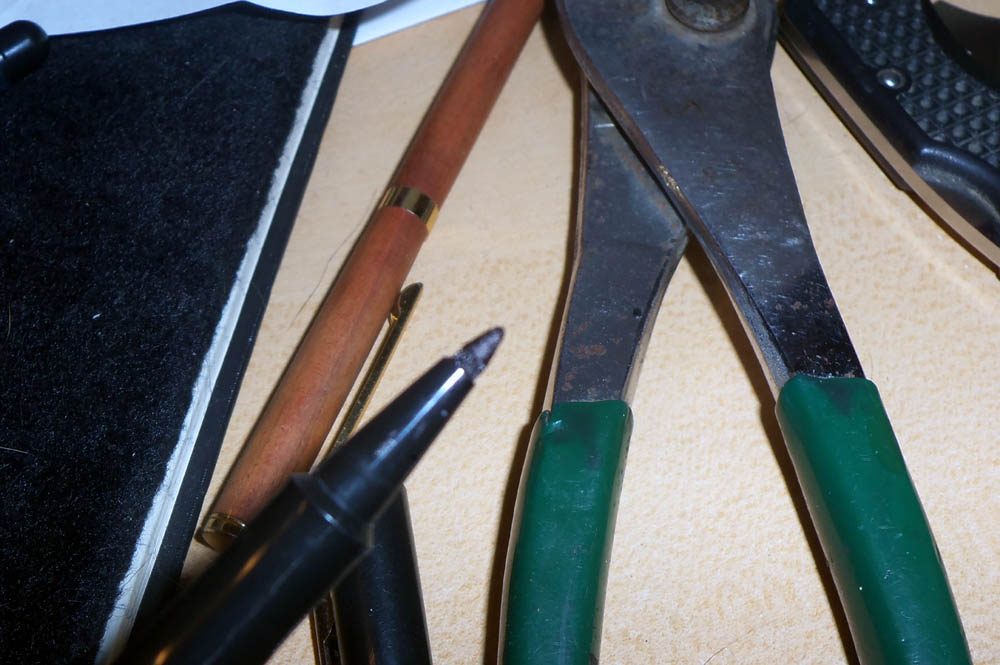
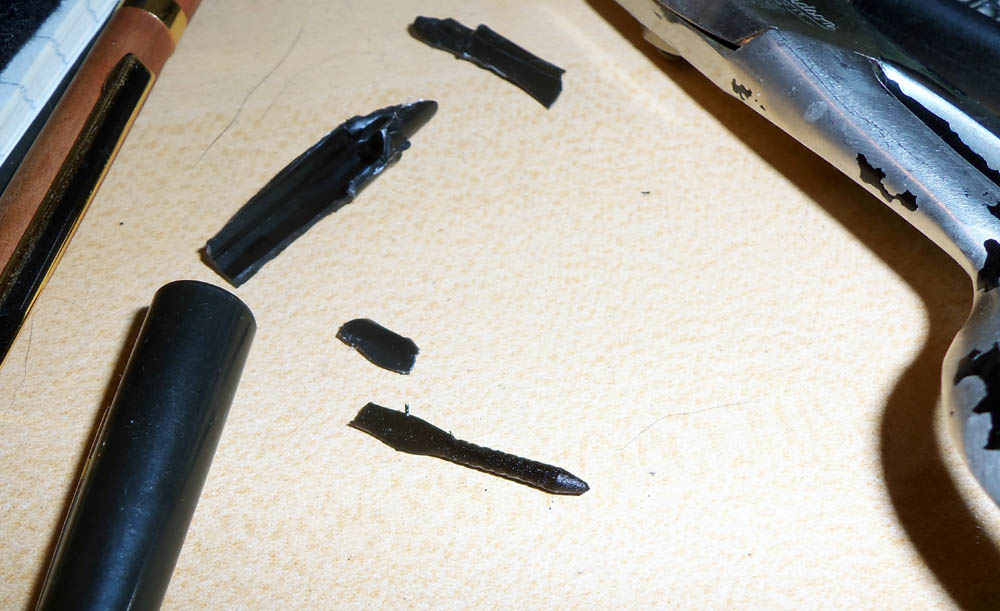 Bonus: the felt-tip is much closer to the diameter of the original pen-tip, so it should write straighter, as even though it’s more pliable than the metal ball-tip, it’s at least less sloppy in the guide mechanism:
Bonus: the felt-tip is much closer to the diameter of the original pen-tip, so it should write straighter, as even though it’s more pliable than the metal ball-tip, it’s at least less sloppy in the guide mechanism:
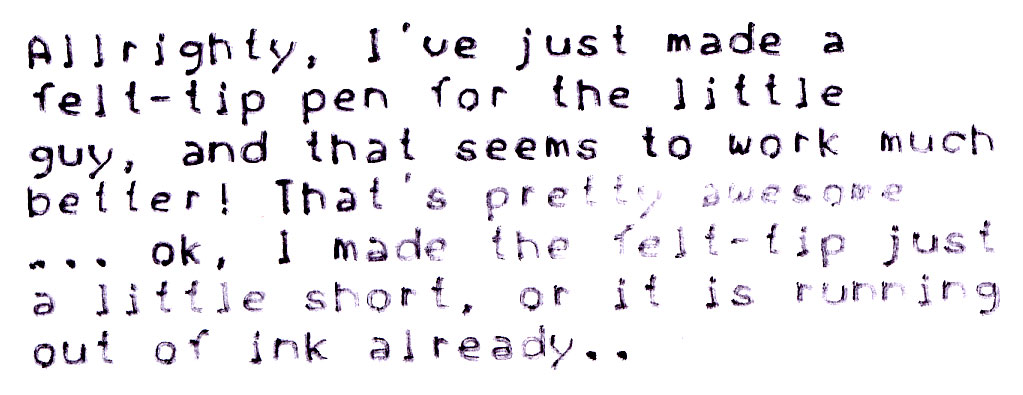 …it was running out of ink, because there was just so much ink in the bare felt-tip that I’d just inserted into a dry cartridge. I stuck the tip in an ink source to suck up some ink into the interior of the cartridge, but to get it right I’ll need to disassemble it again and actually put new cotton inside to soak up ink. Just having the tip in there doesn’t hold much ink…
…it was running out of ink, because there was just so much ink in the bare felt-tip that I’d just inserted into a dry cartridge. I stuck the tip in an ink source to suck up some ink into the interior of the cartridge, but to get it right I’ll need to disassemble it again and actually put new cotton inside to soak up ink. Just having the tip in there doesn’t hold much ink…

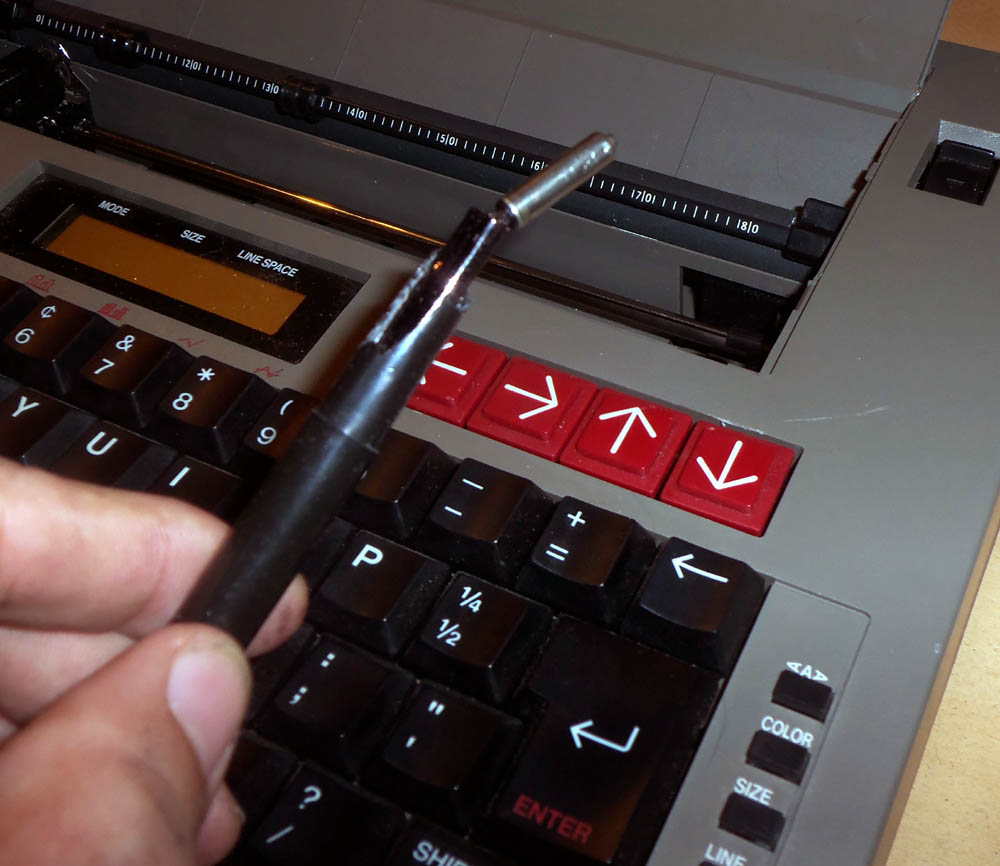 Then I put my improvised Cross ball-tip in again and attempted to draw a graph. well, I need at least 3 tips installed to do that (the graphing function seems to insist on using more than 1 color to draw a graph, and keeps cycling the cylinder trying to load a new pen)
Then I put my improvised Cross ball-tip in again and attempted to draw a graph. well, I need at least 3 tips installed to do that (the graphing function seems to insist on using more than 1 color to draw a graph, and keeps cycling the cylinder trying to load a new pen)
Heh, well I guess I’m prolly going to grow to love this thing, what with the crazy quirkiness of it’s text, the sheer goofiness of using a pen plotter as a typewriter, and the fun challenge of finding ways to revive the pen tips. :D
and now, the promised user manual:
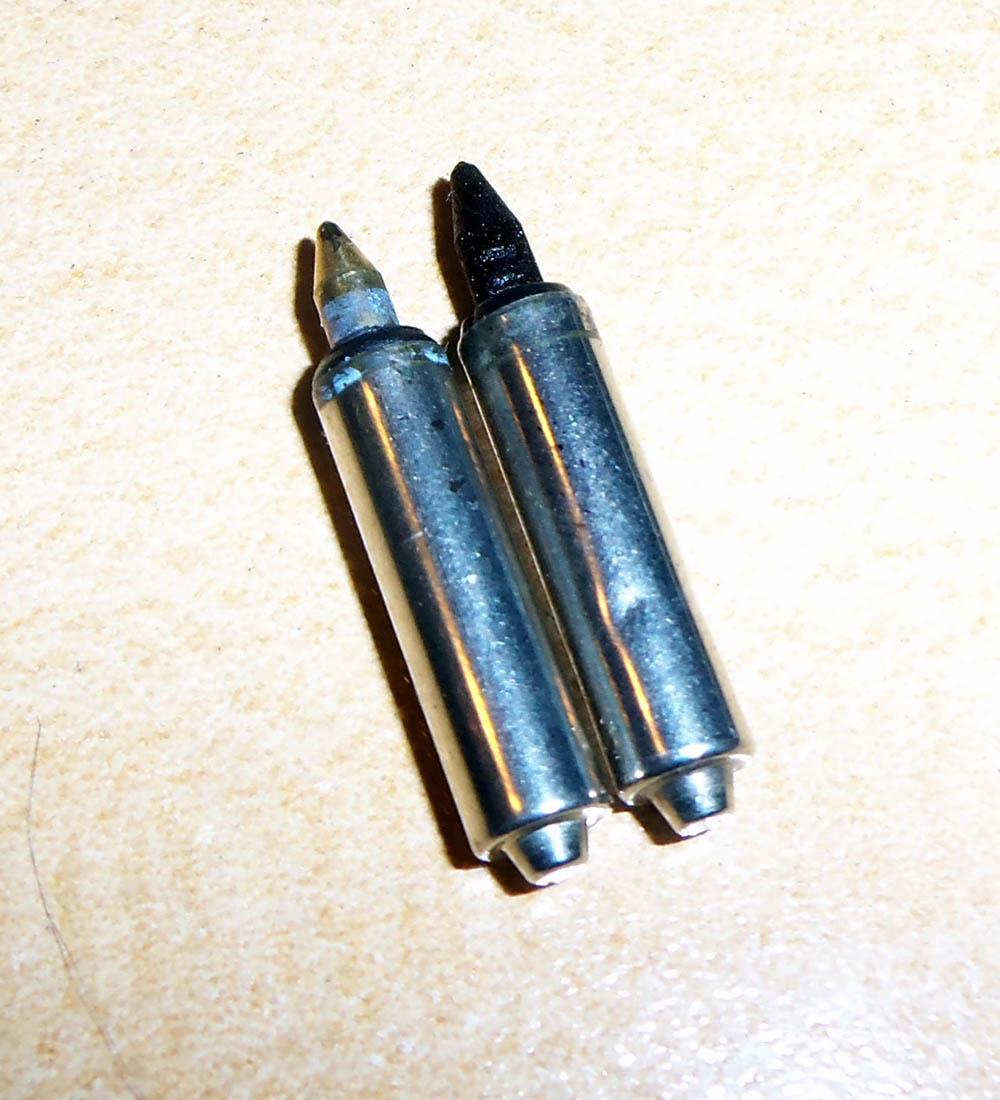
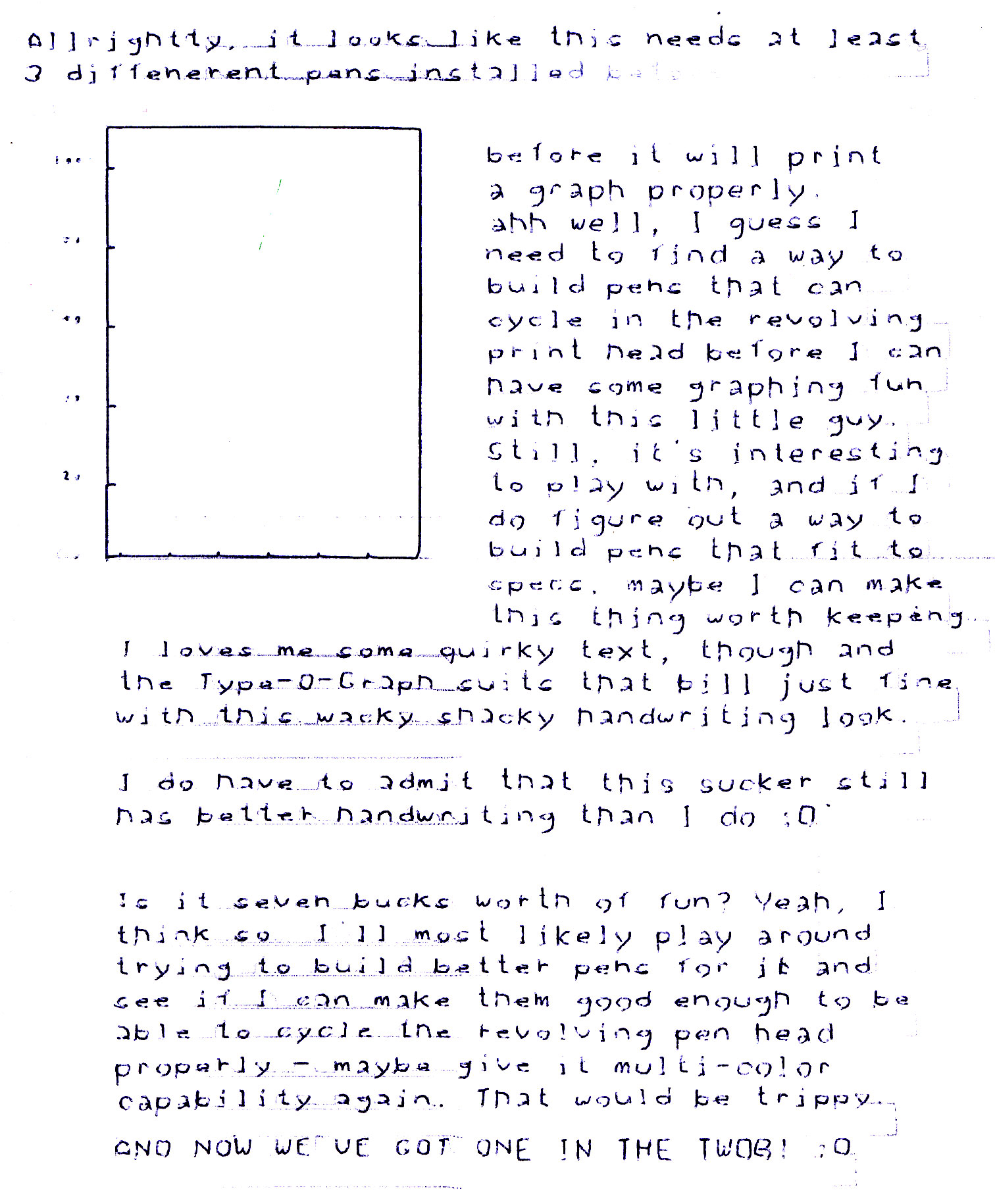

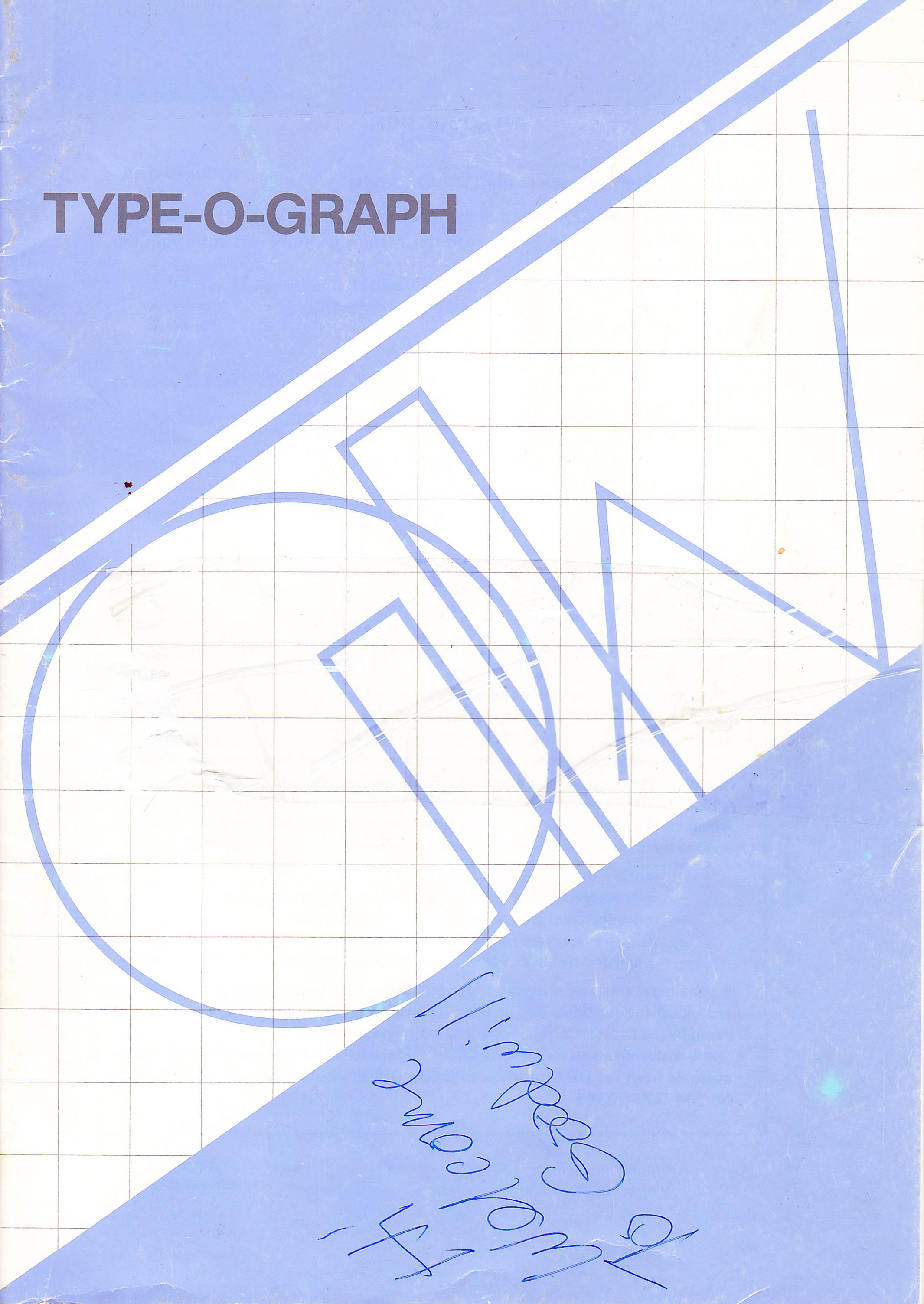
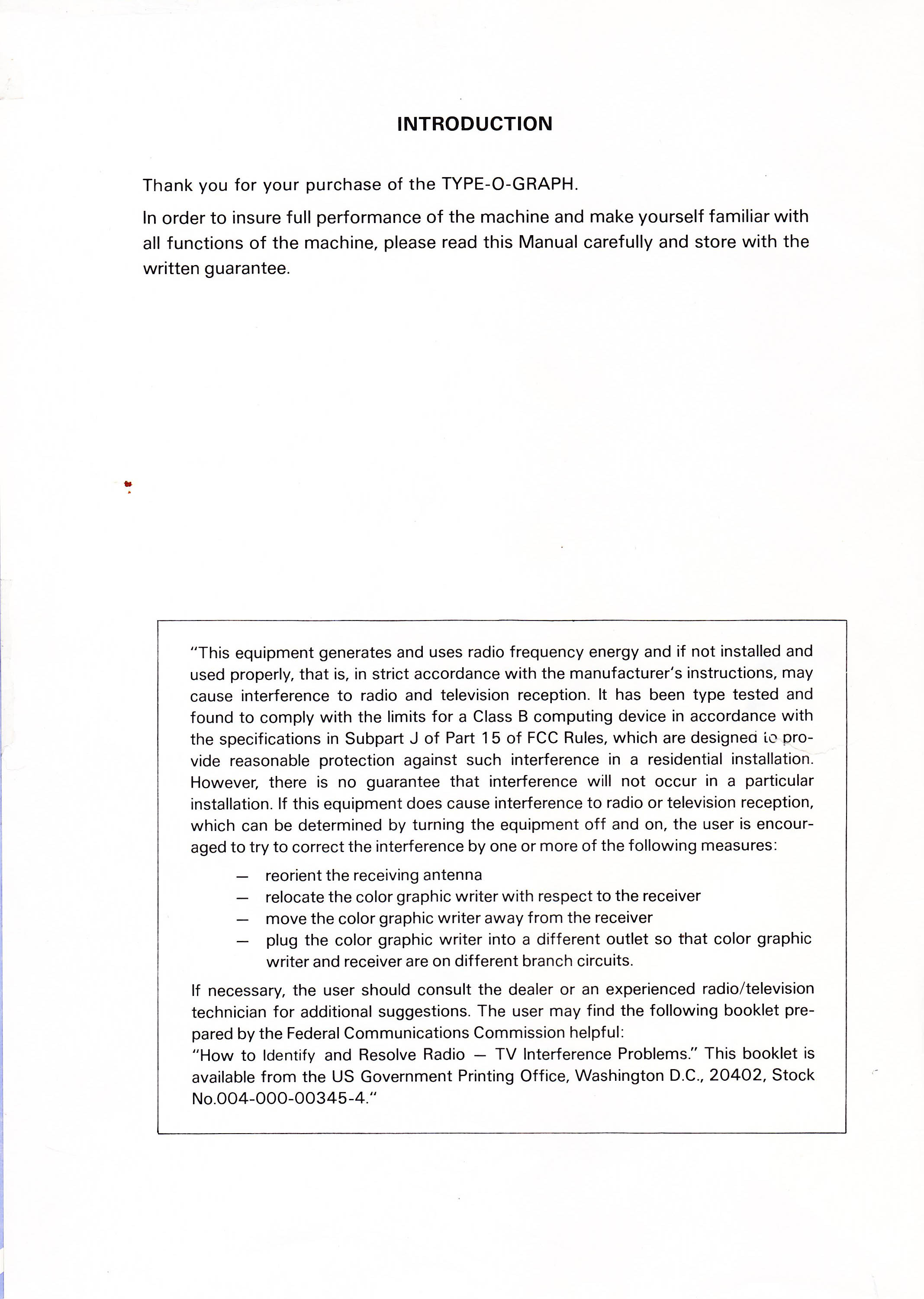
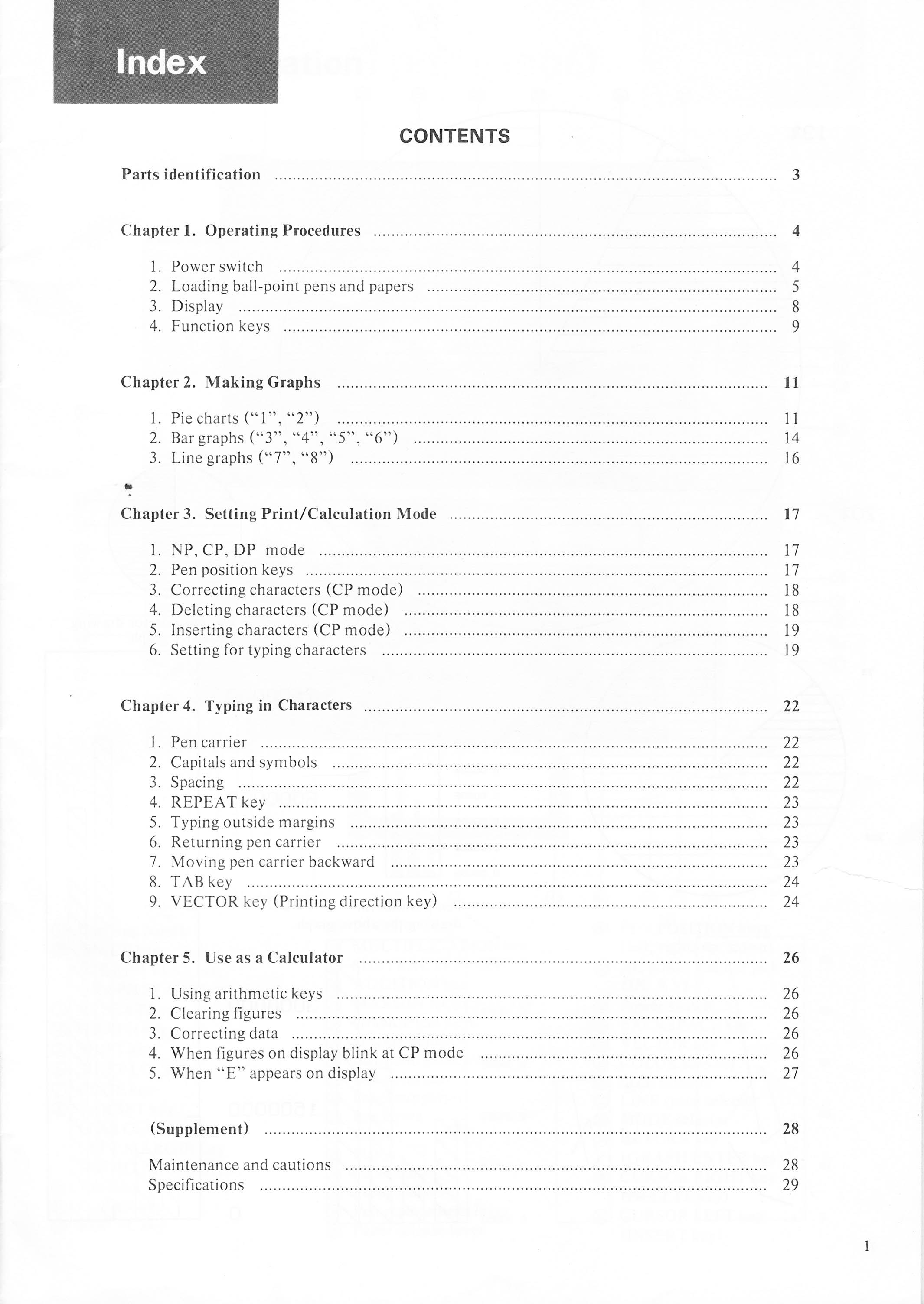
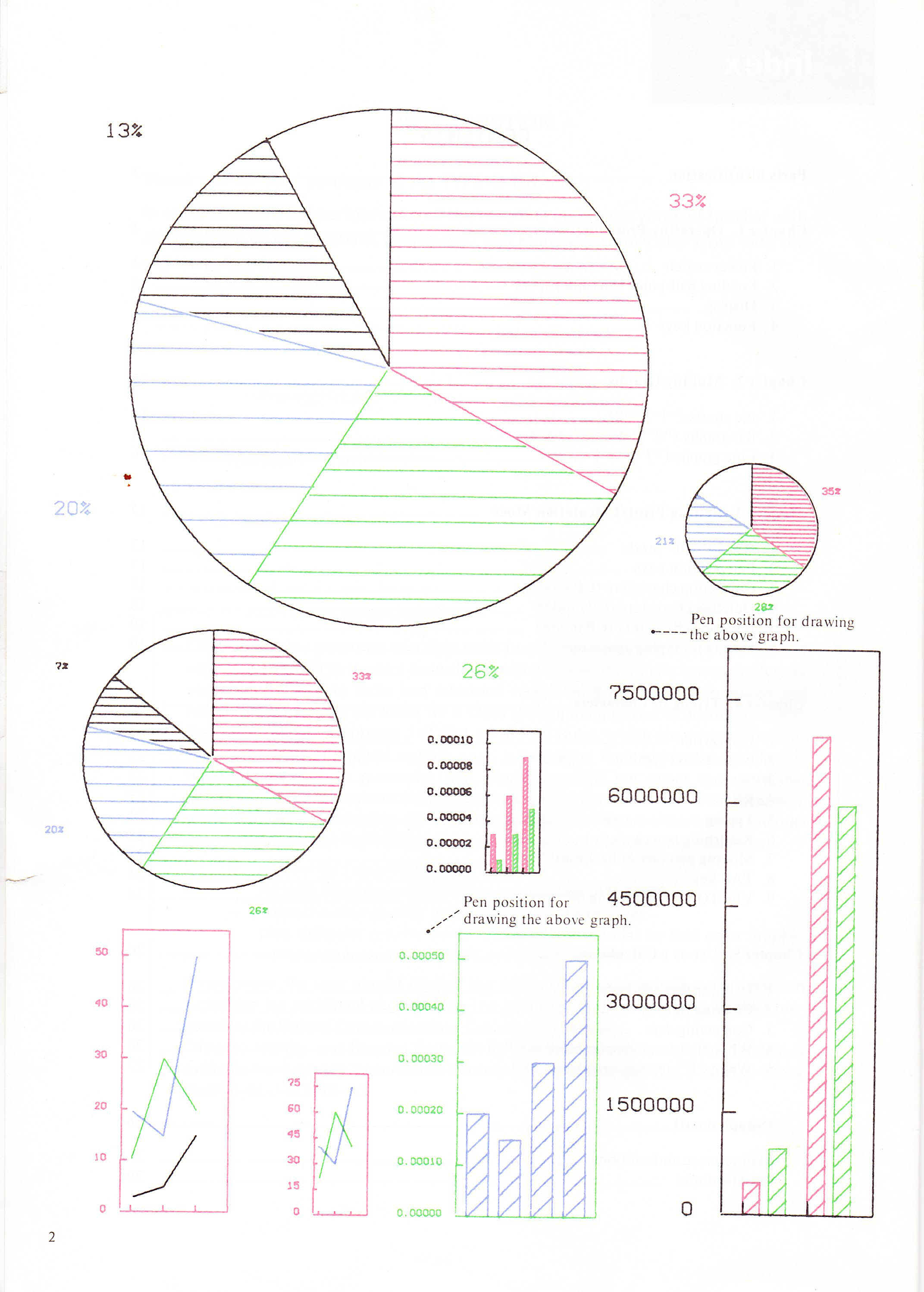

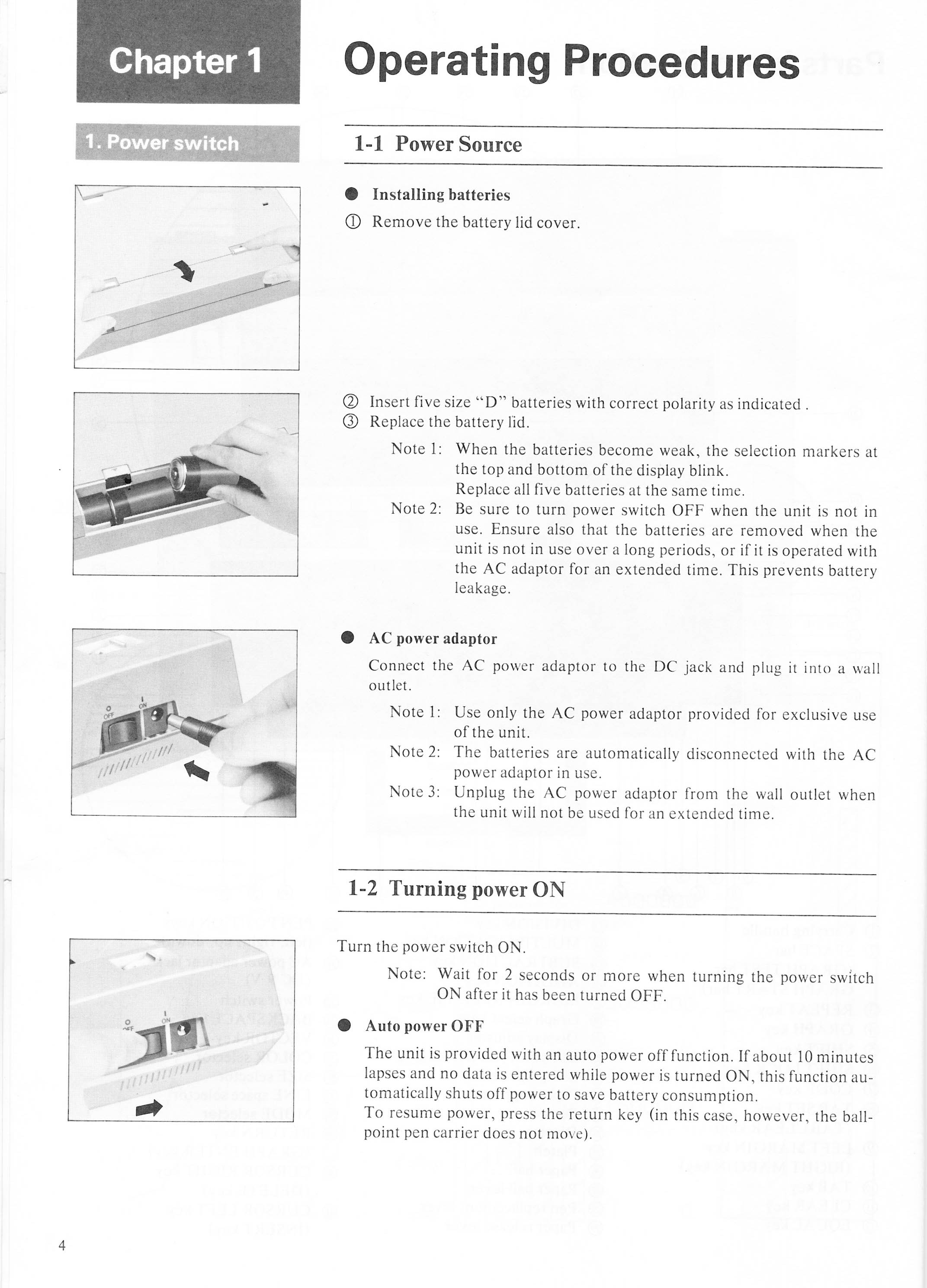
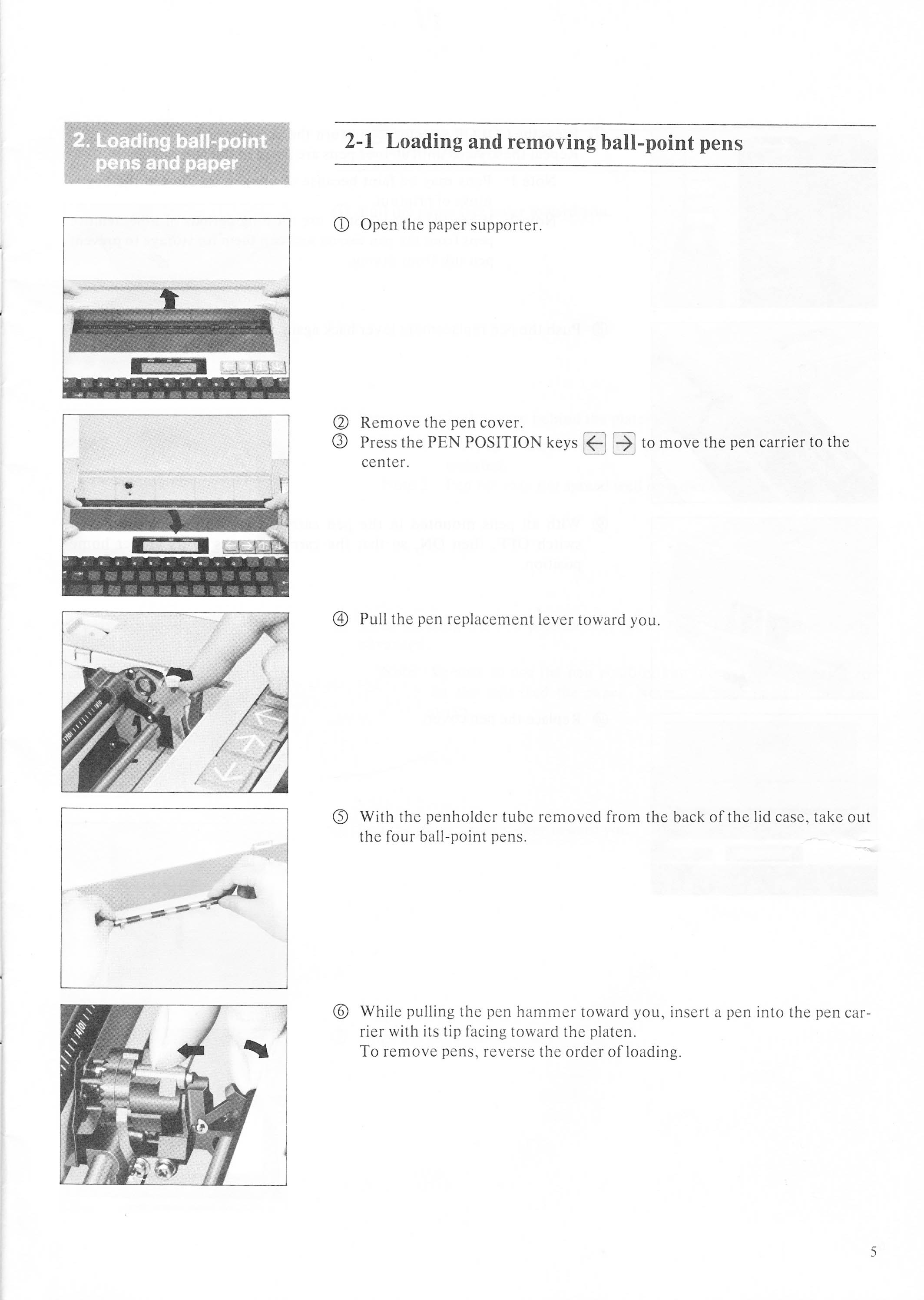
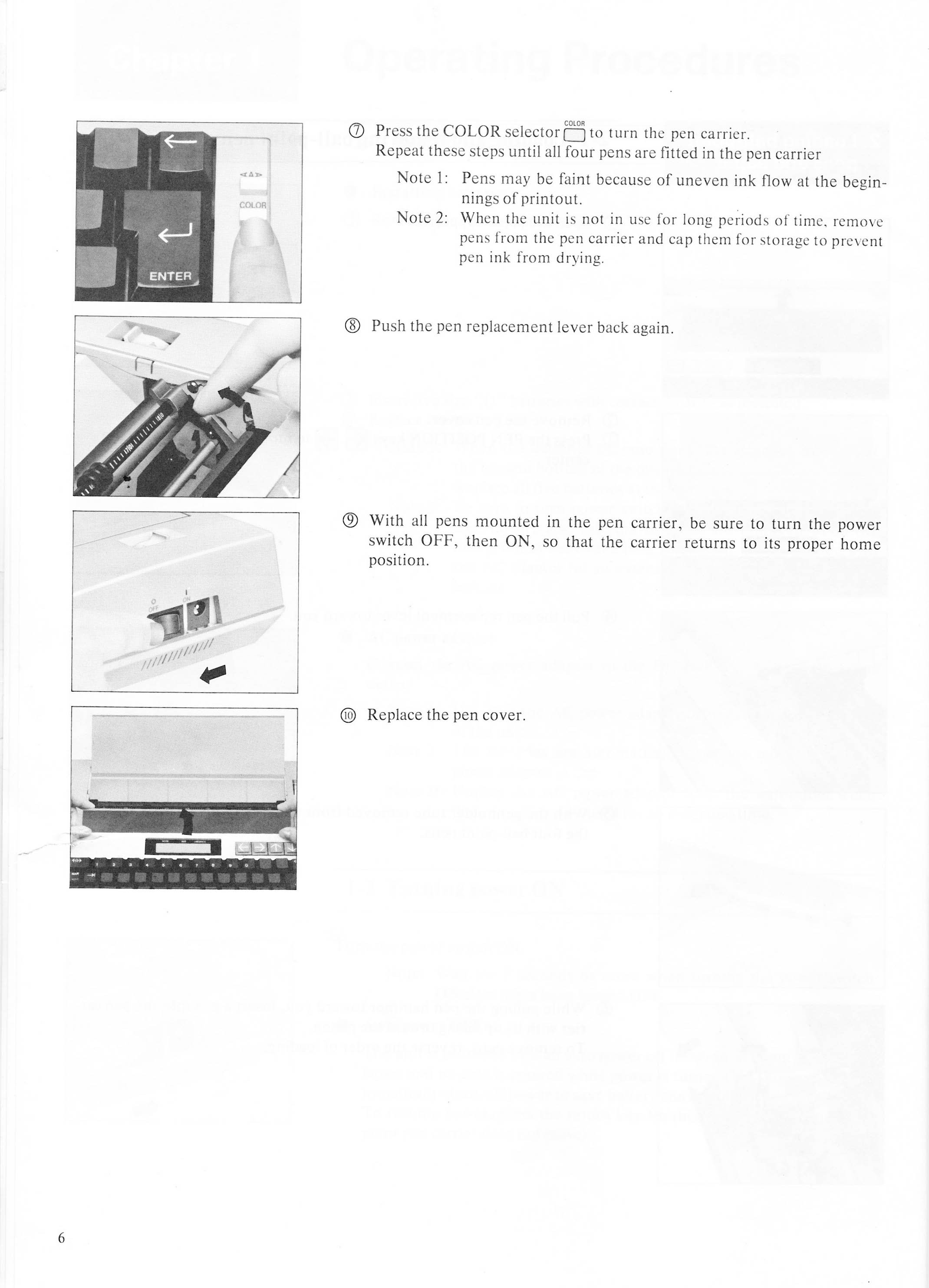
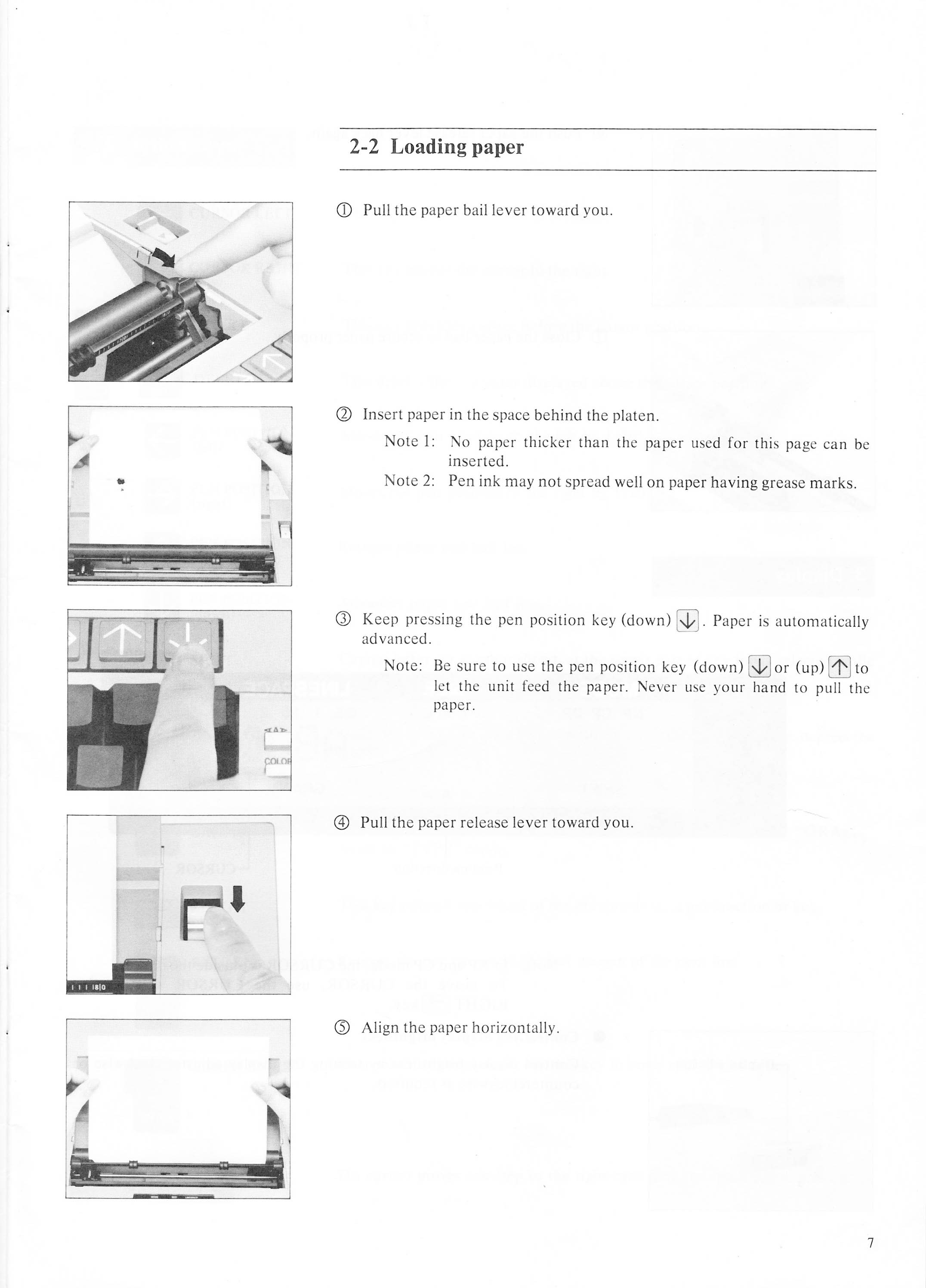
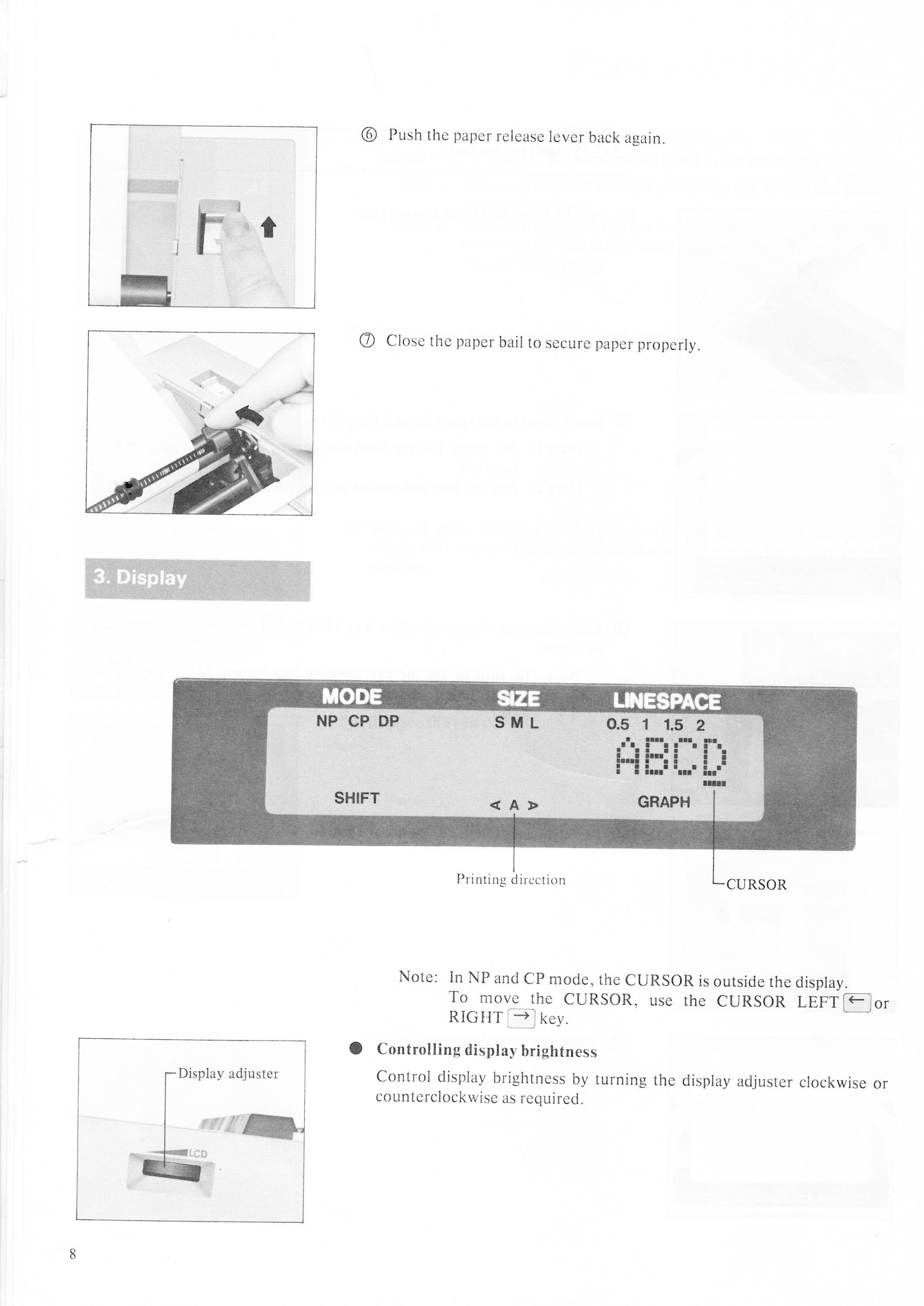
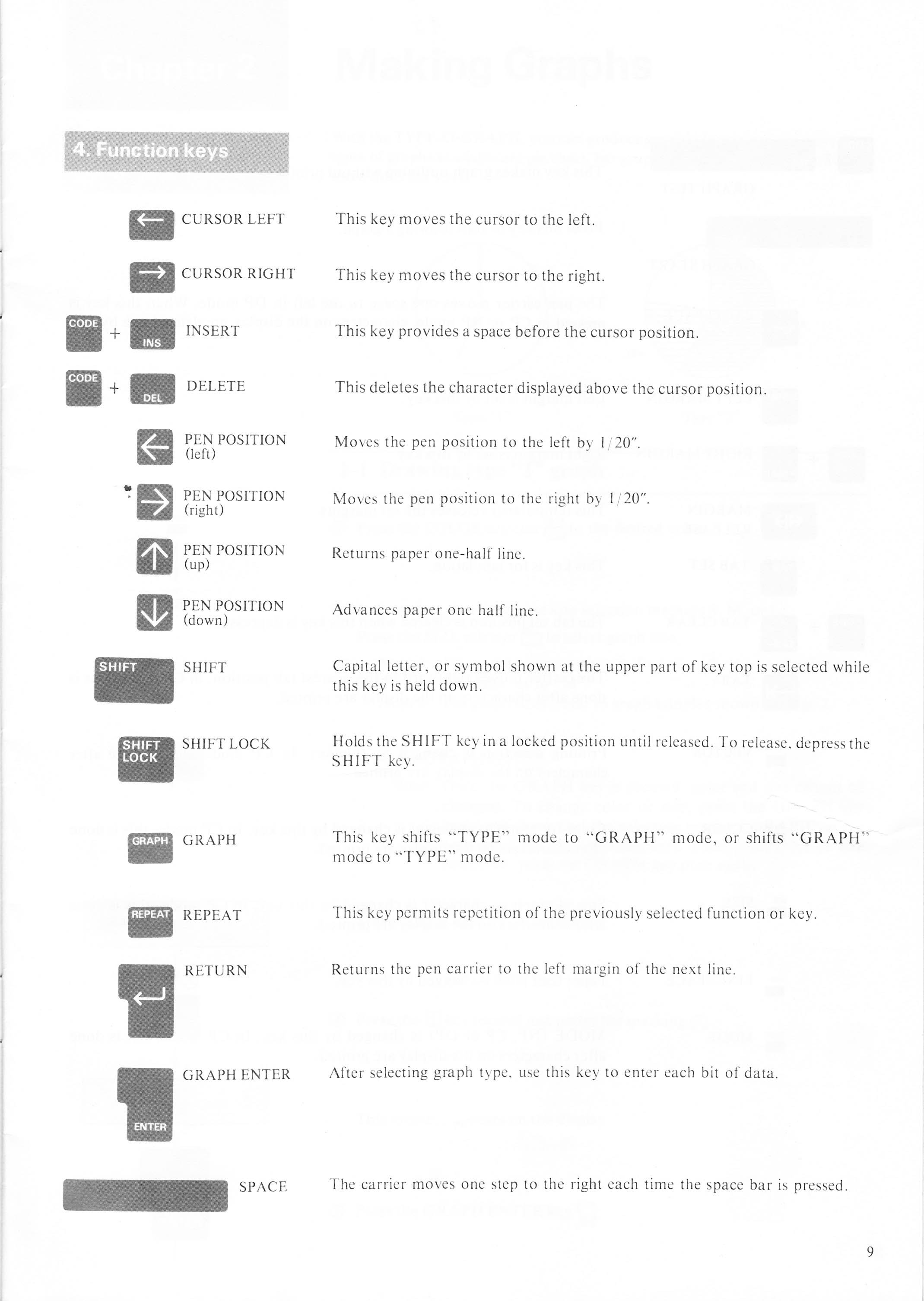
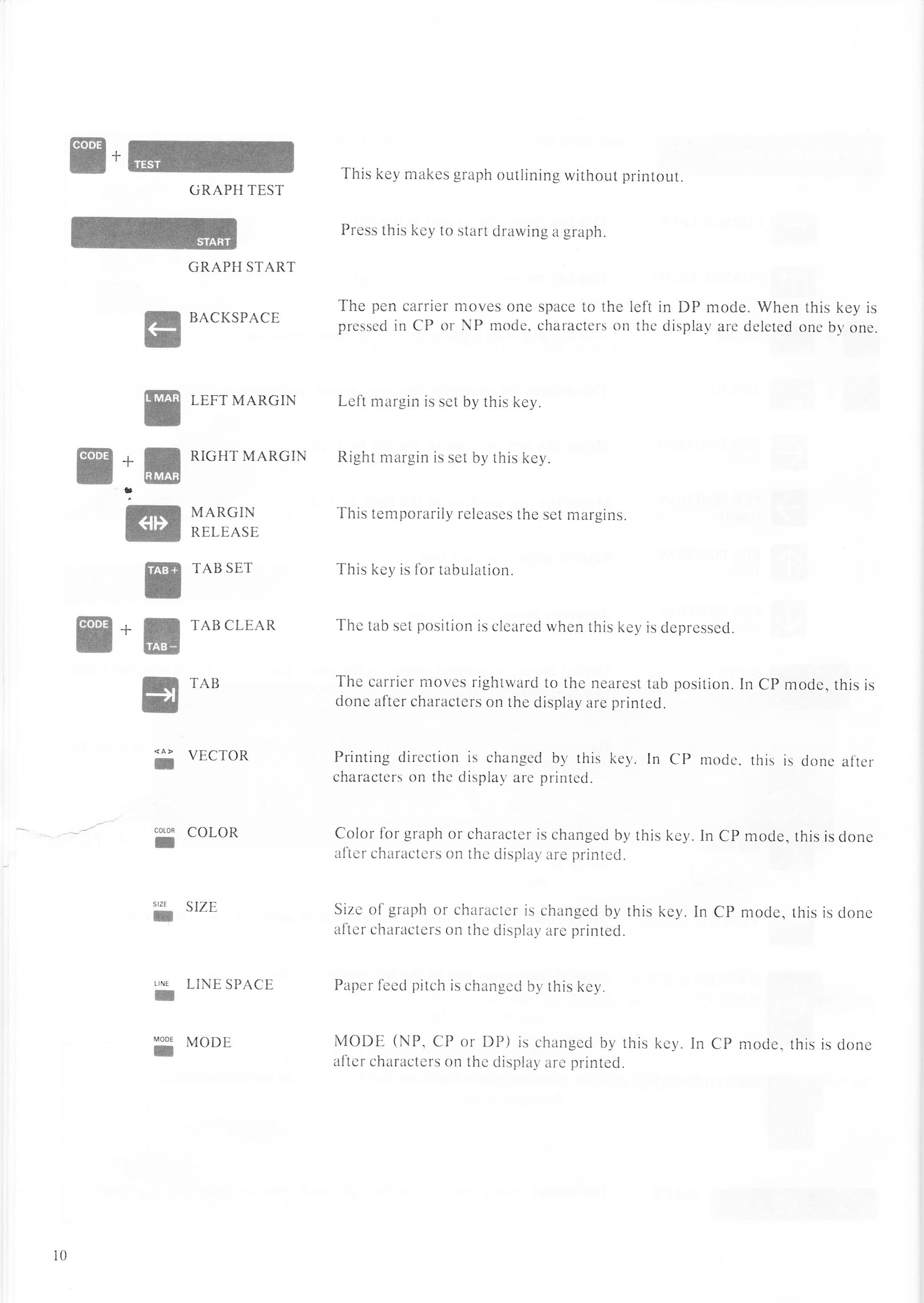
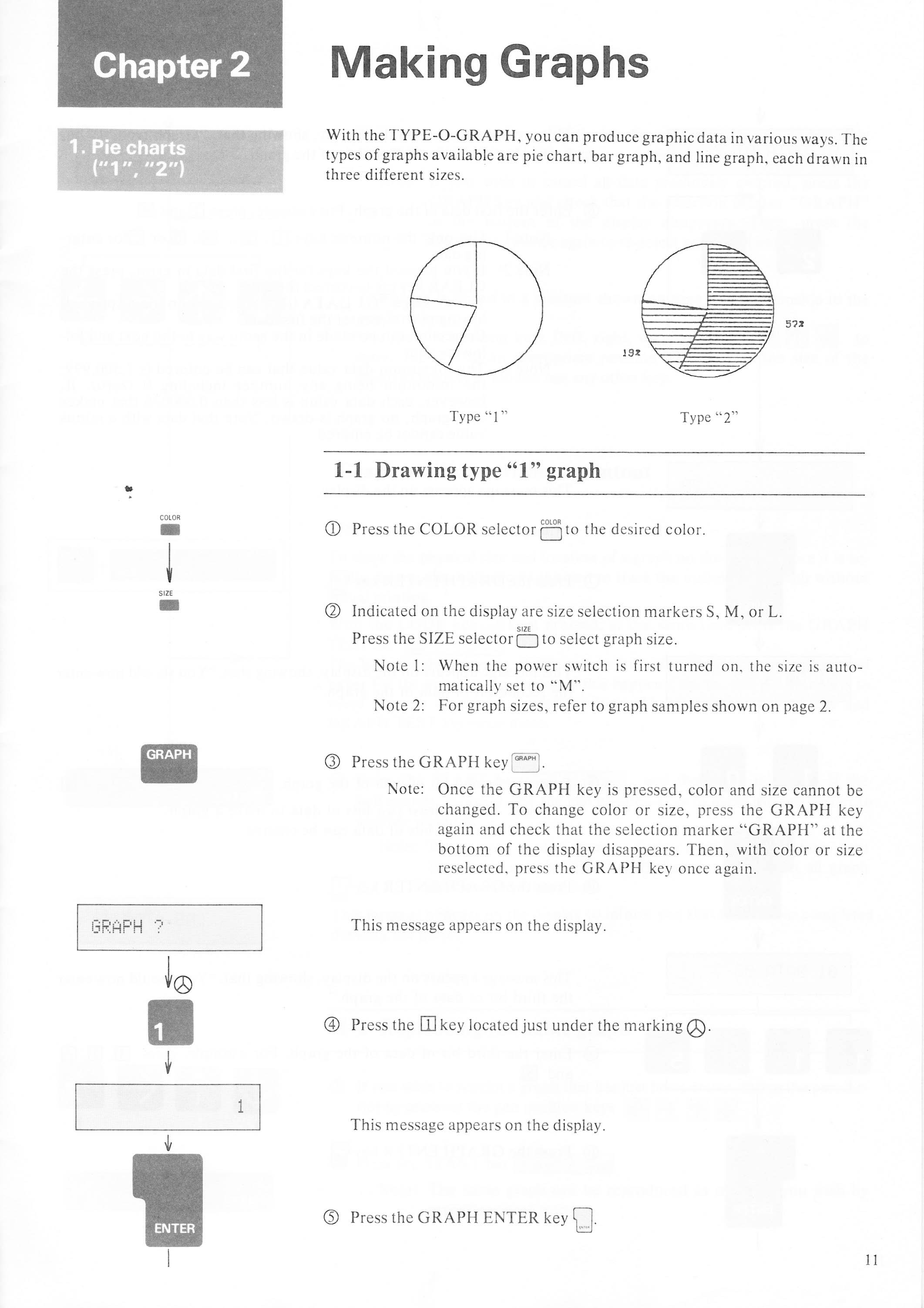
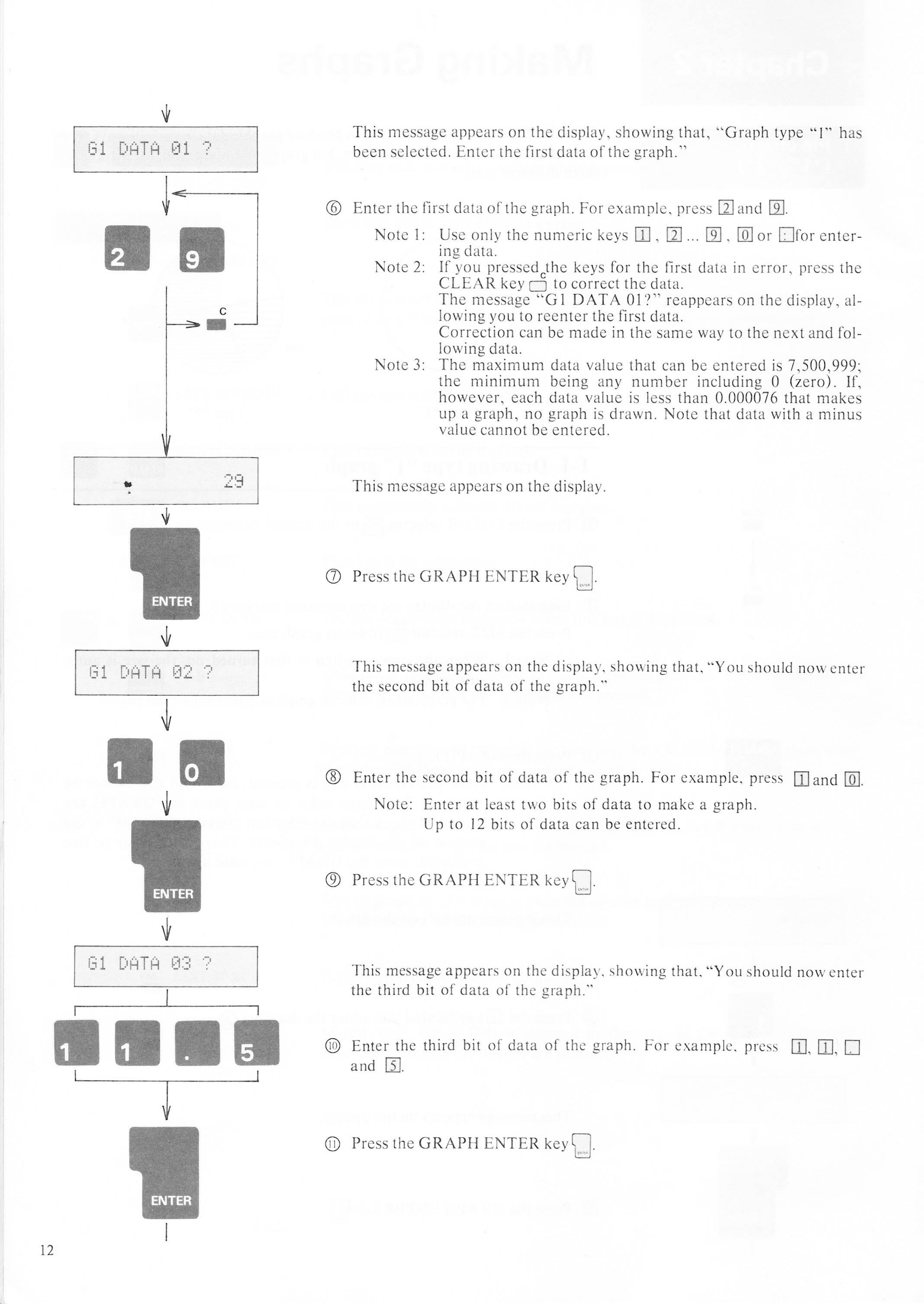
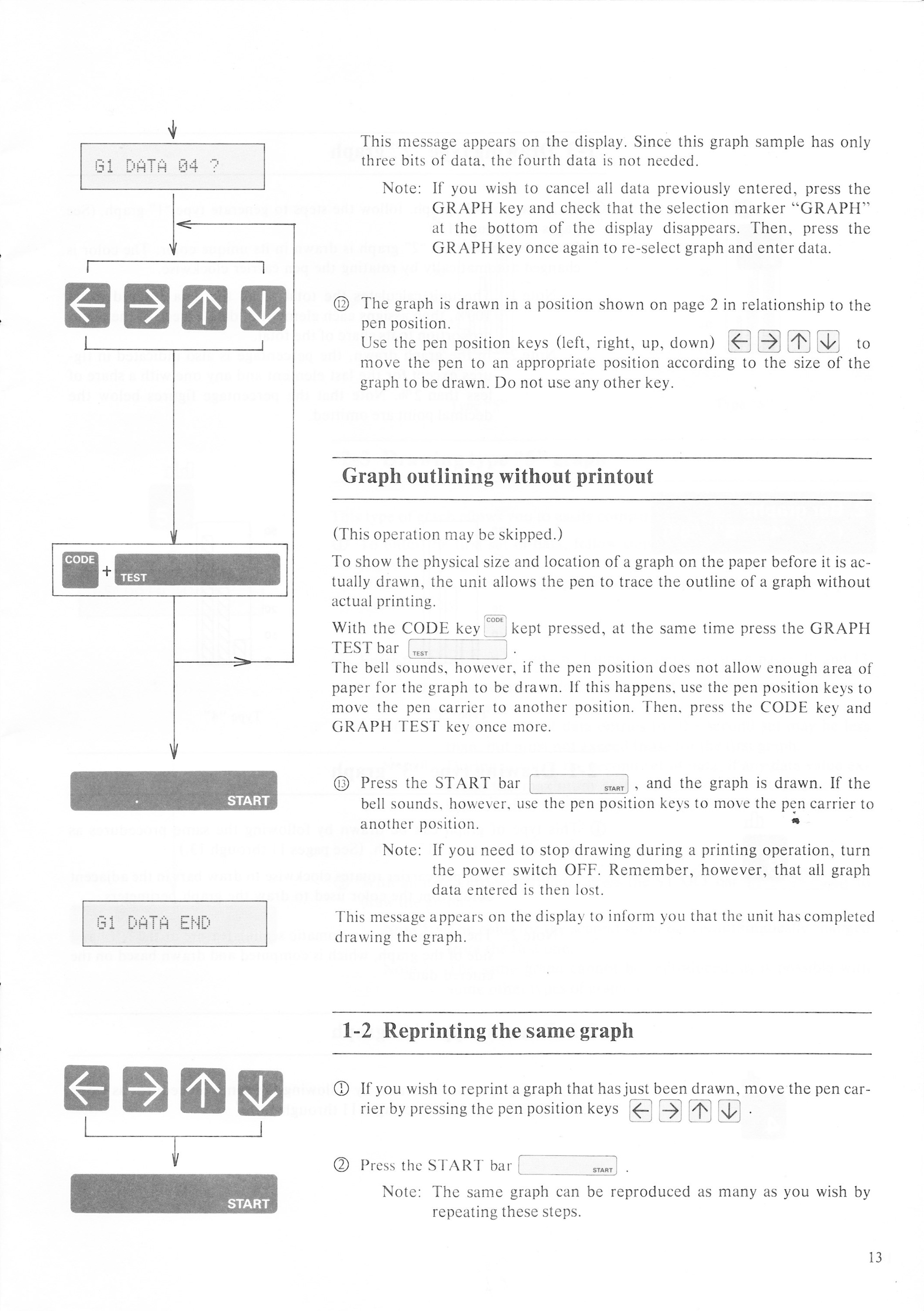
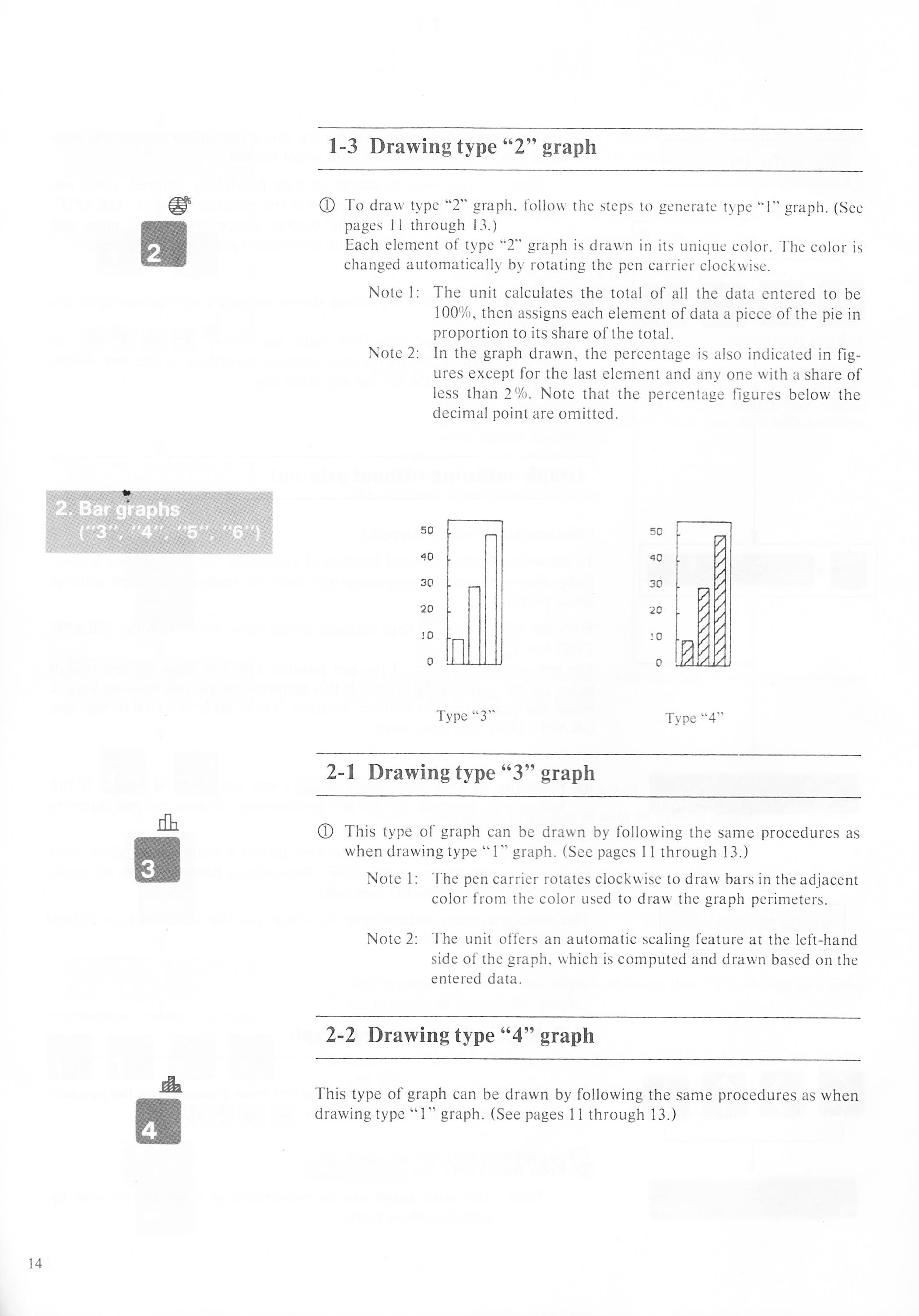
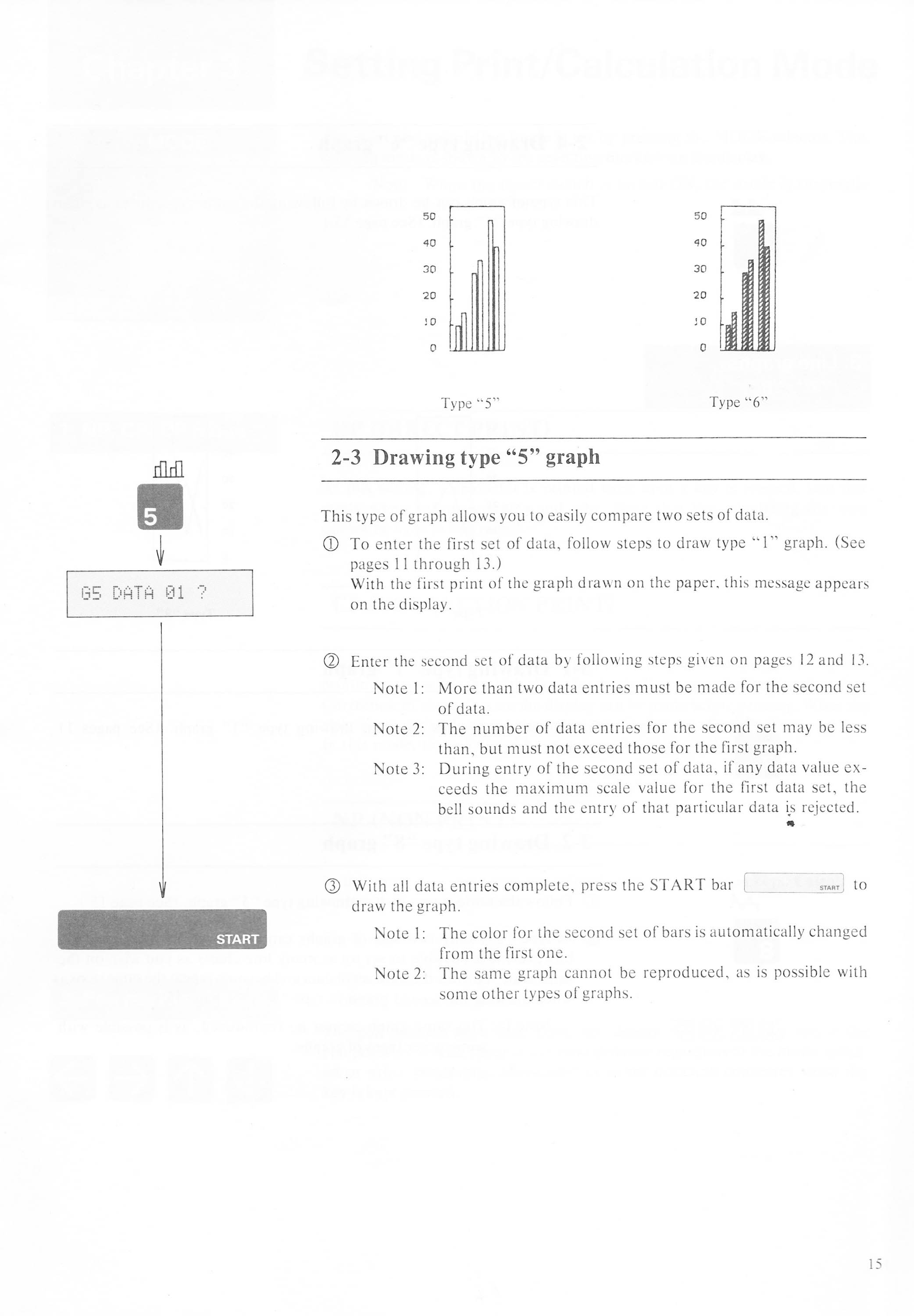
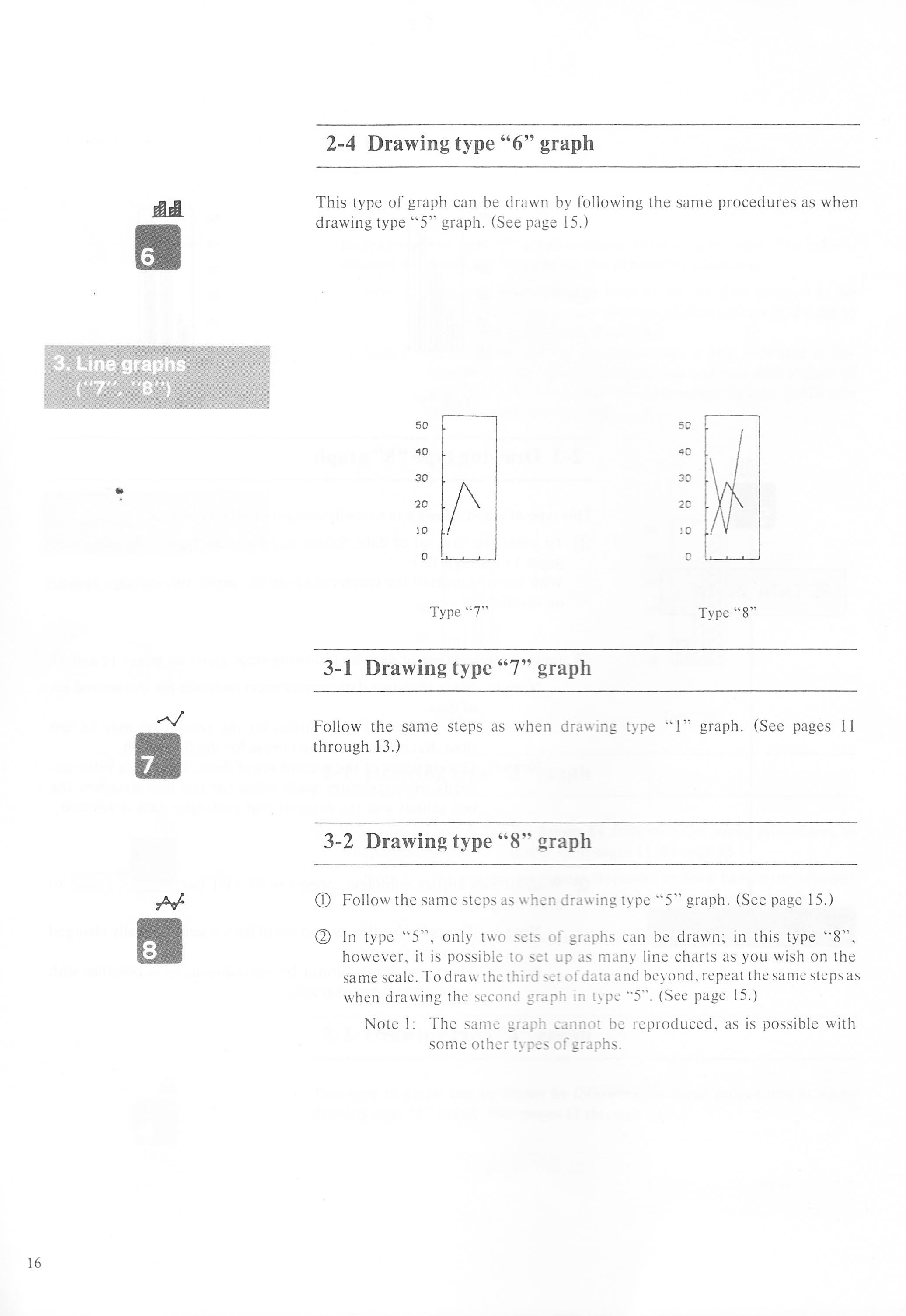

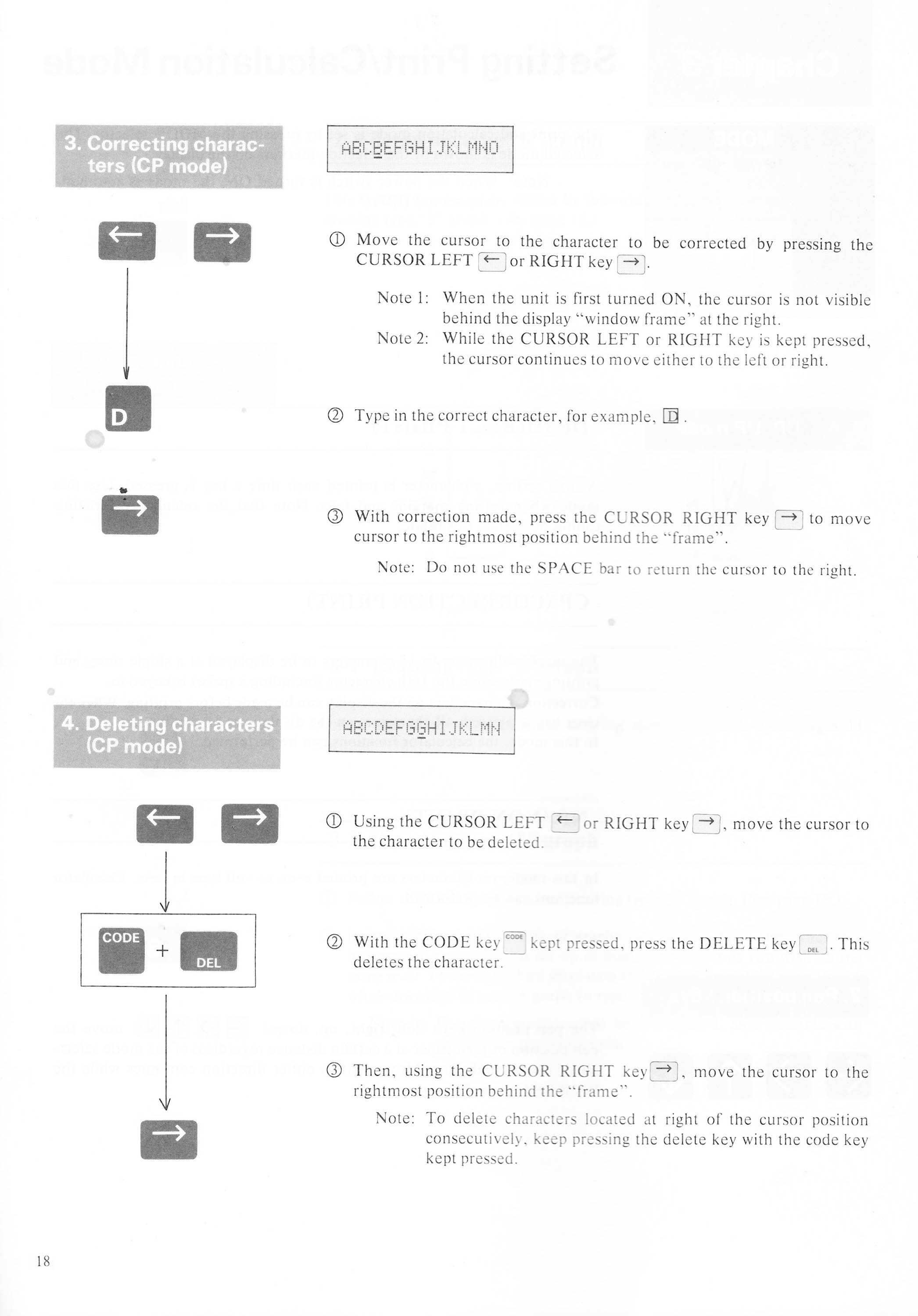
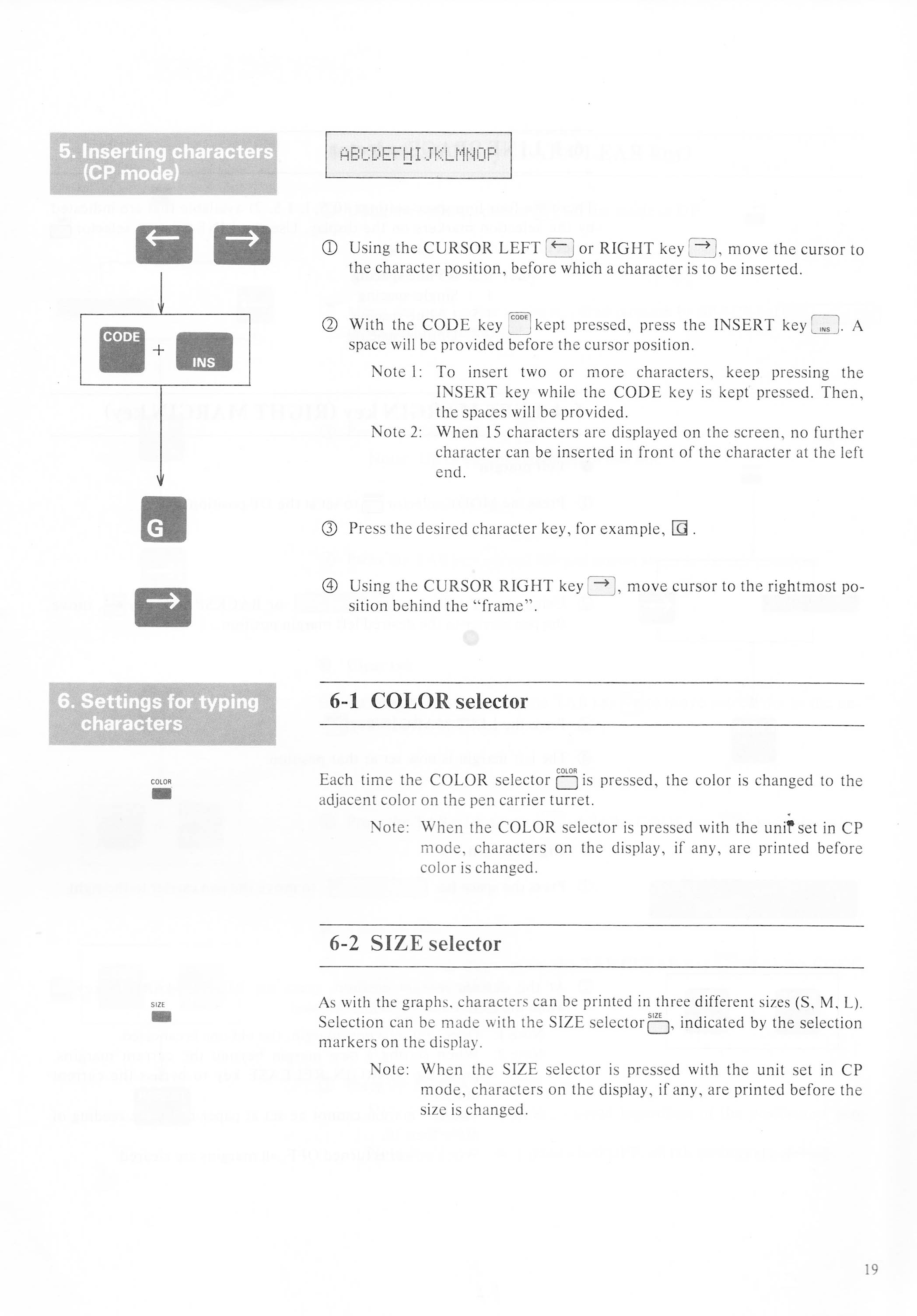

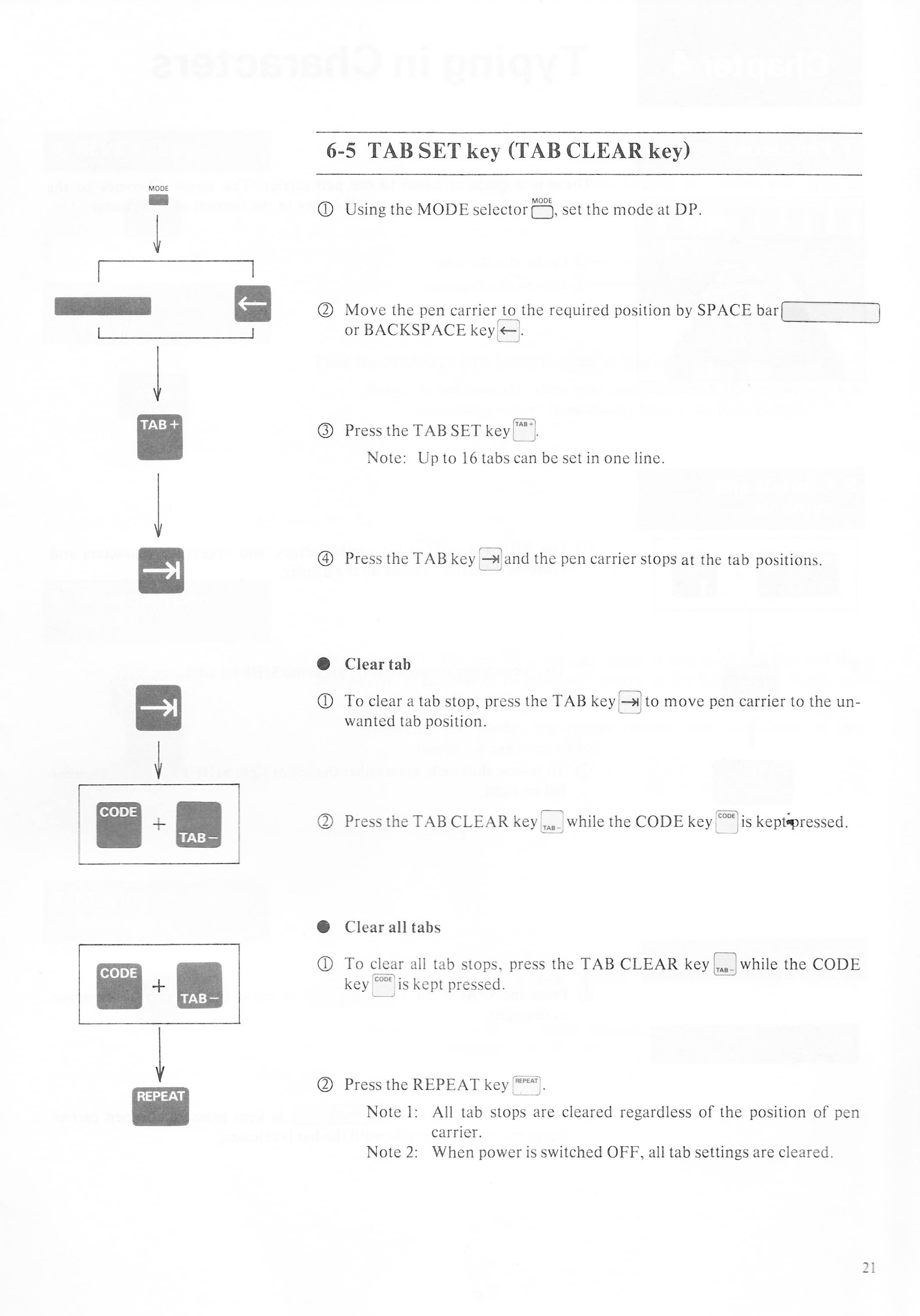
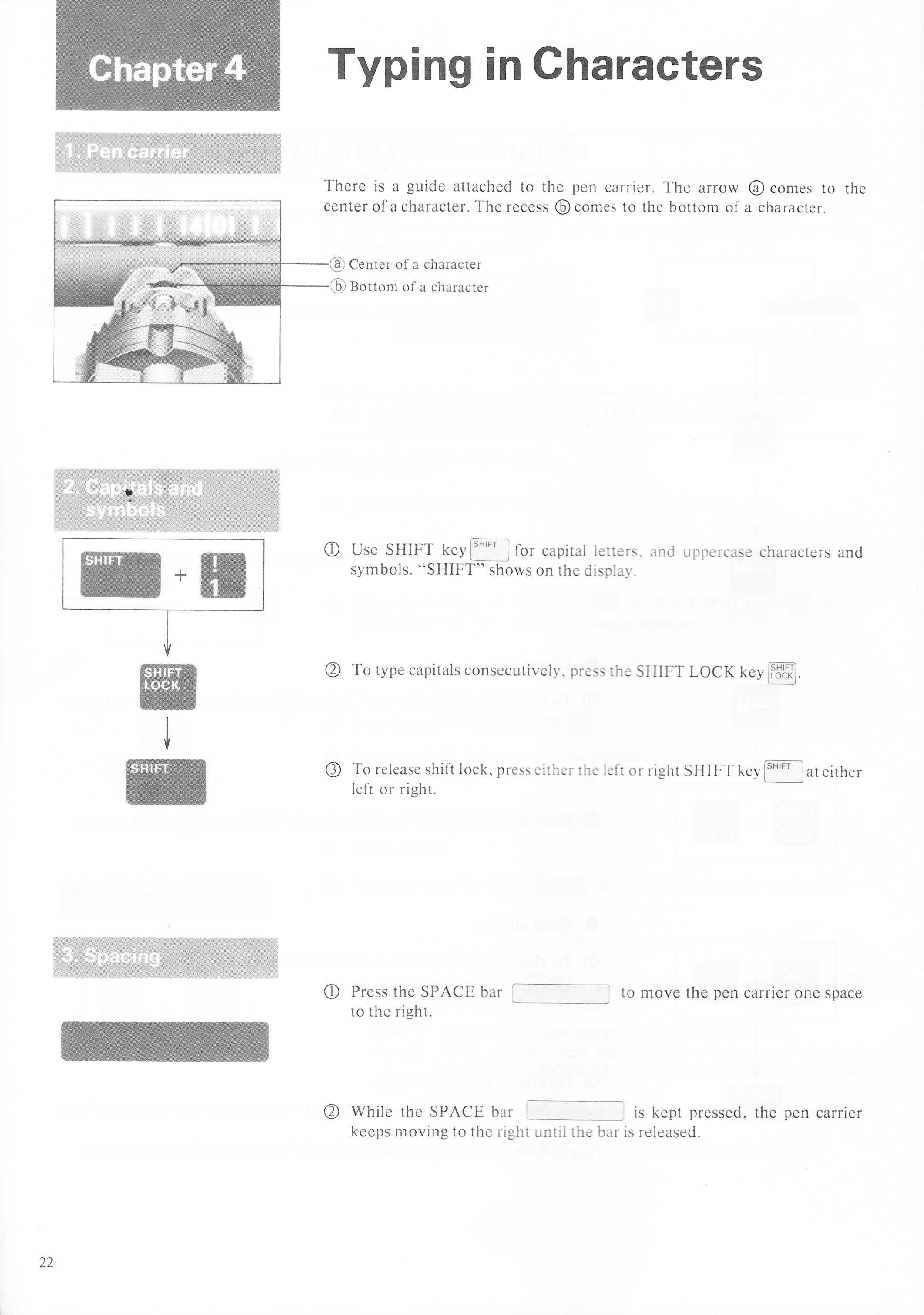

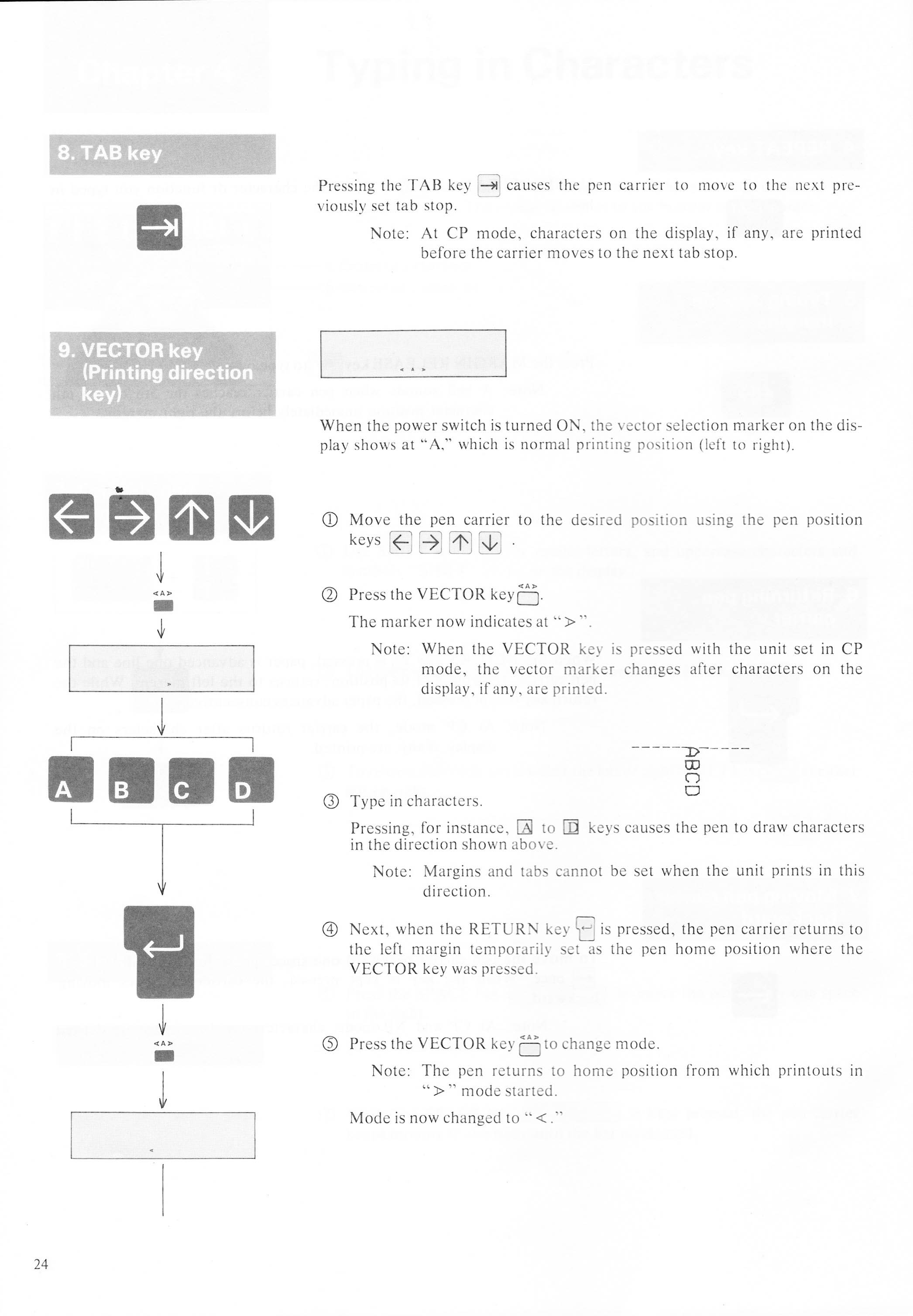
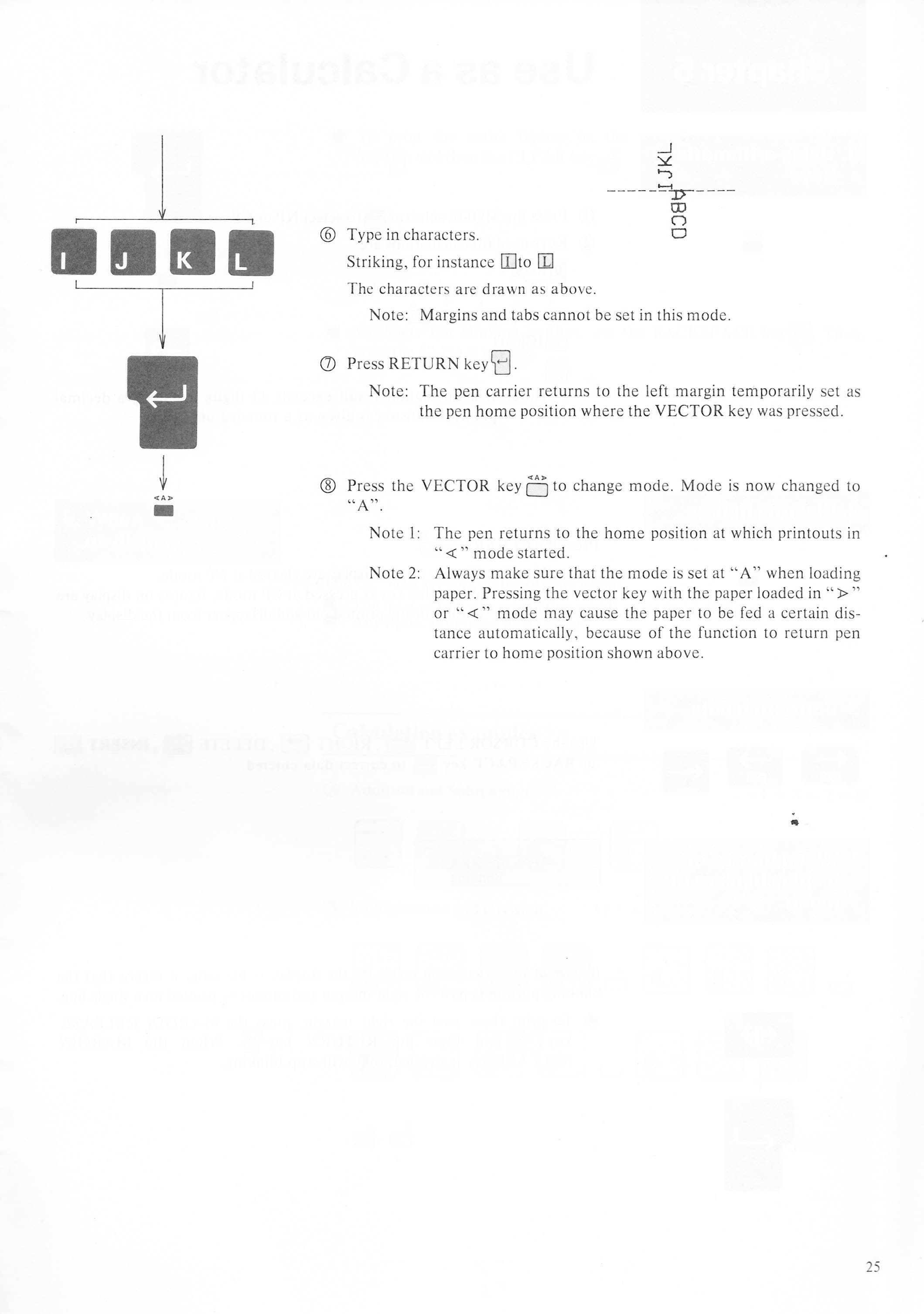
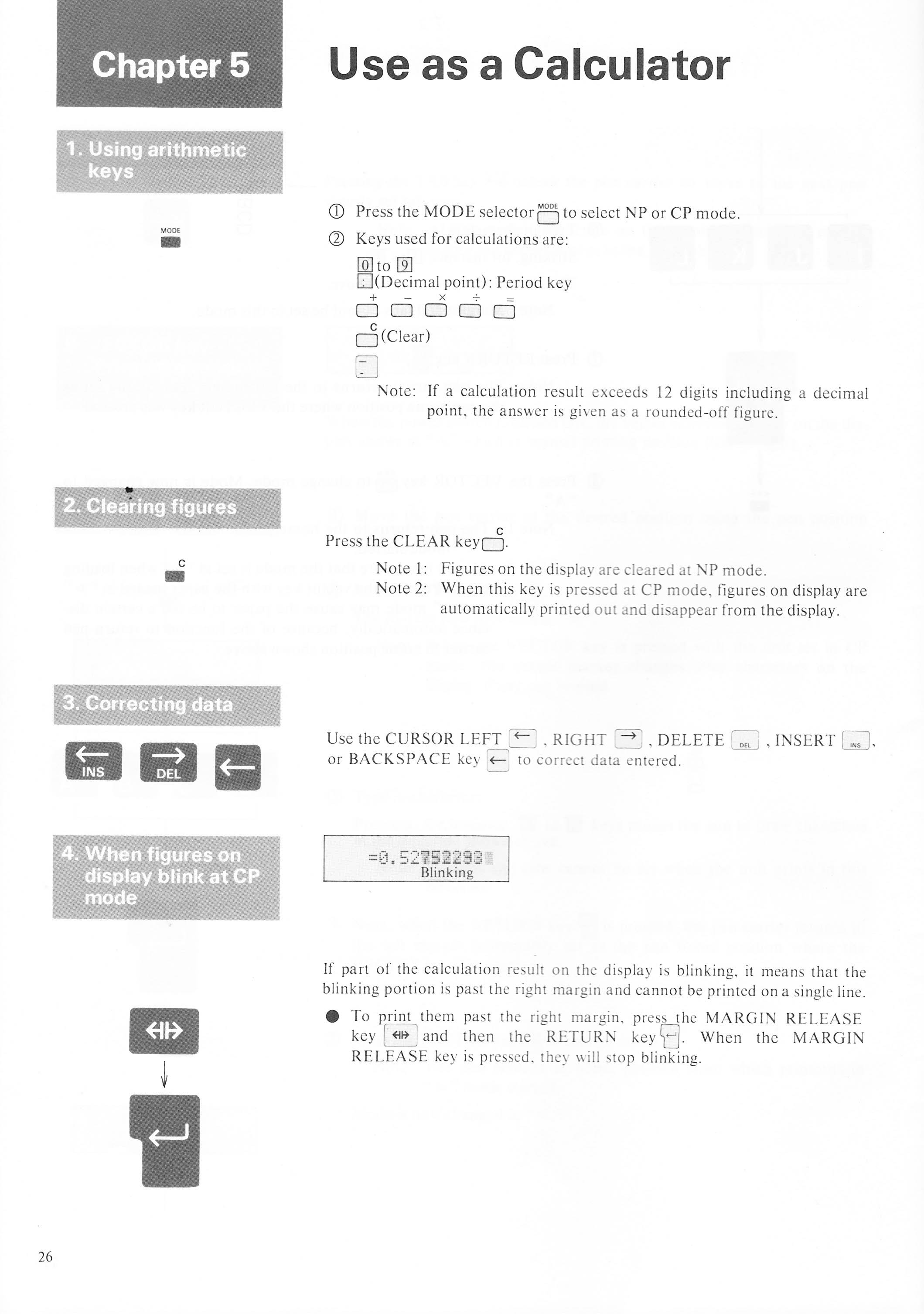
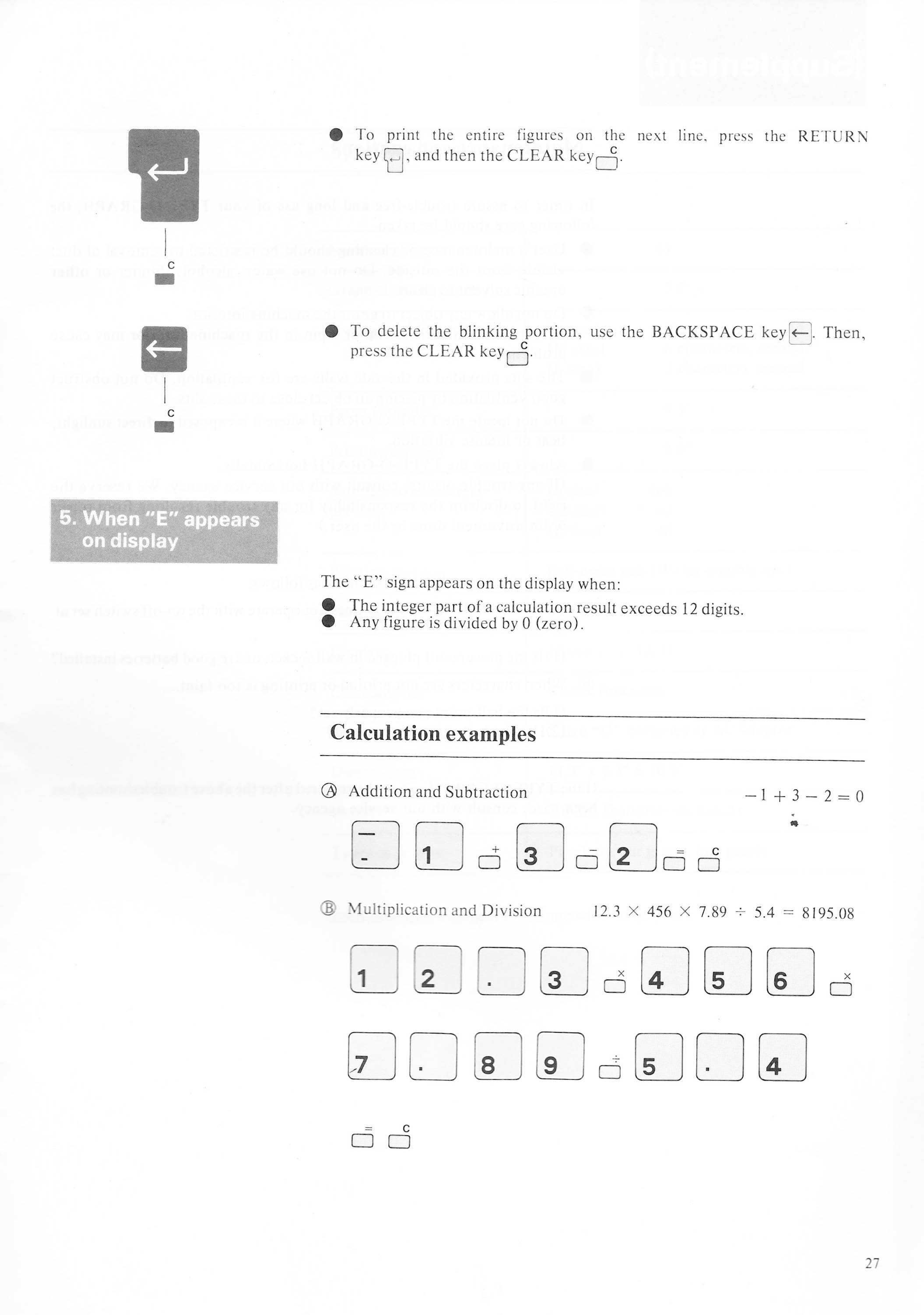
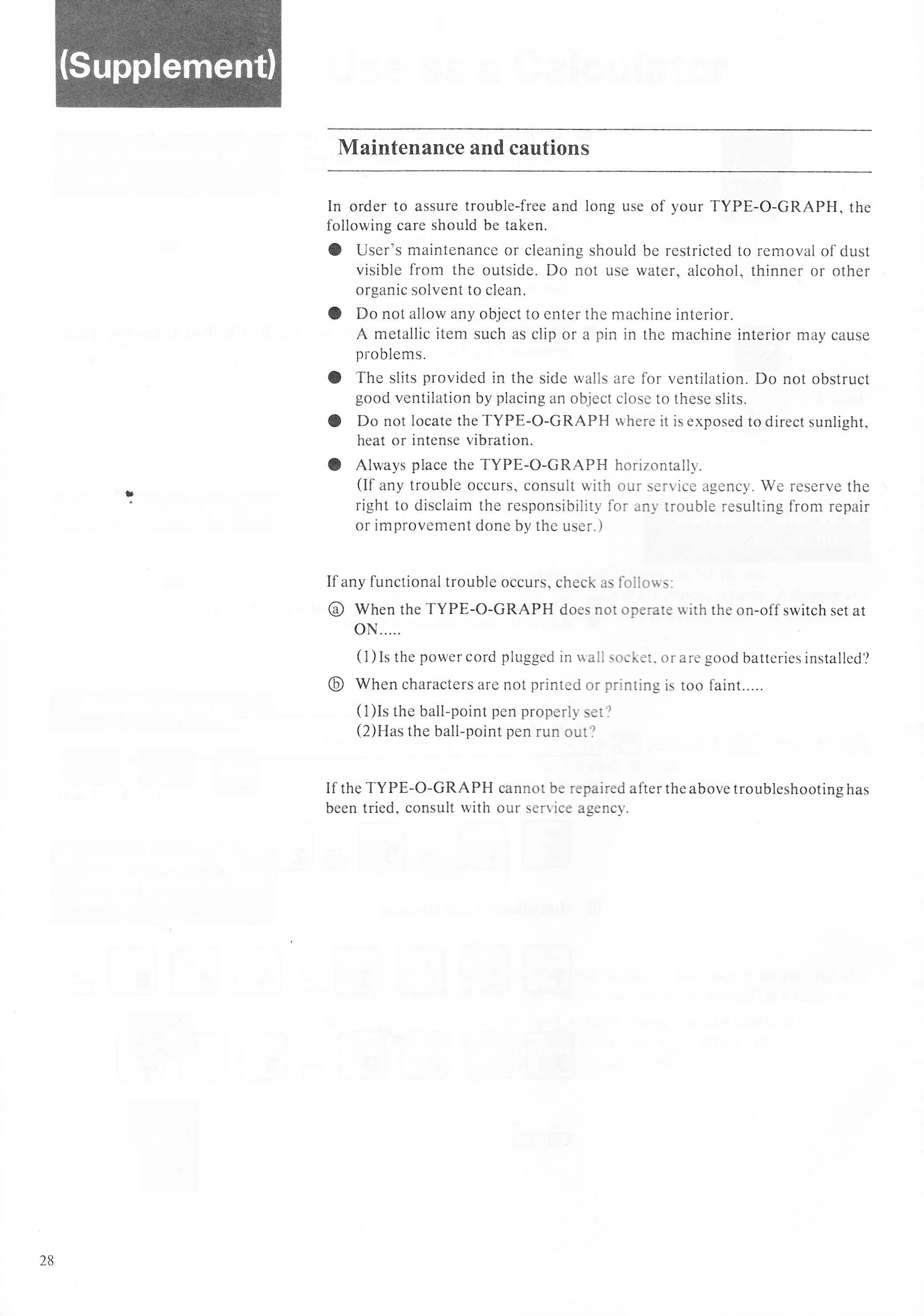
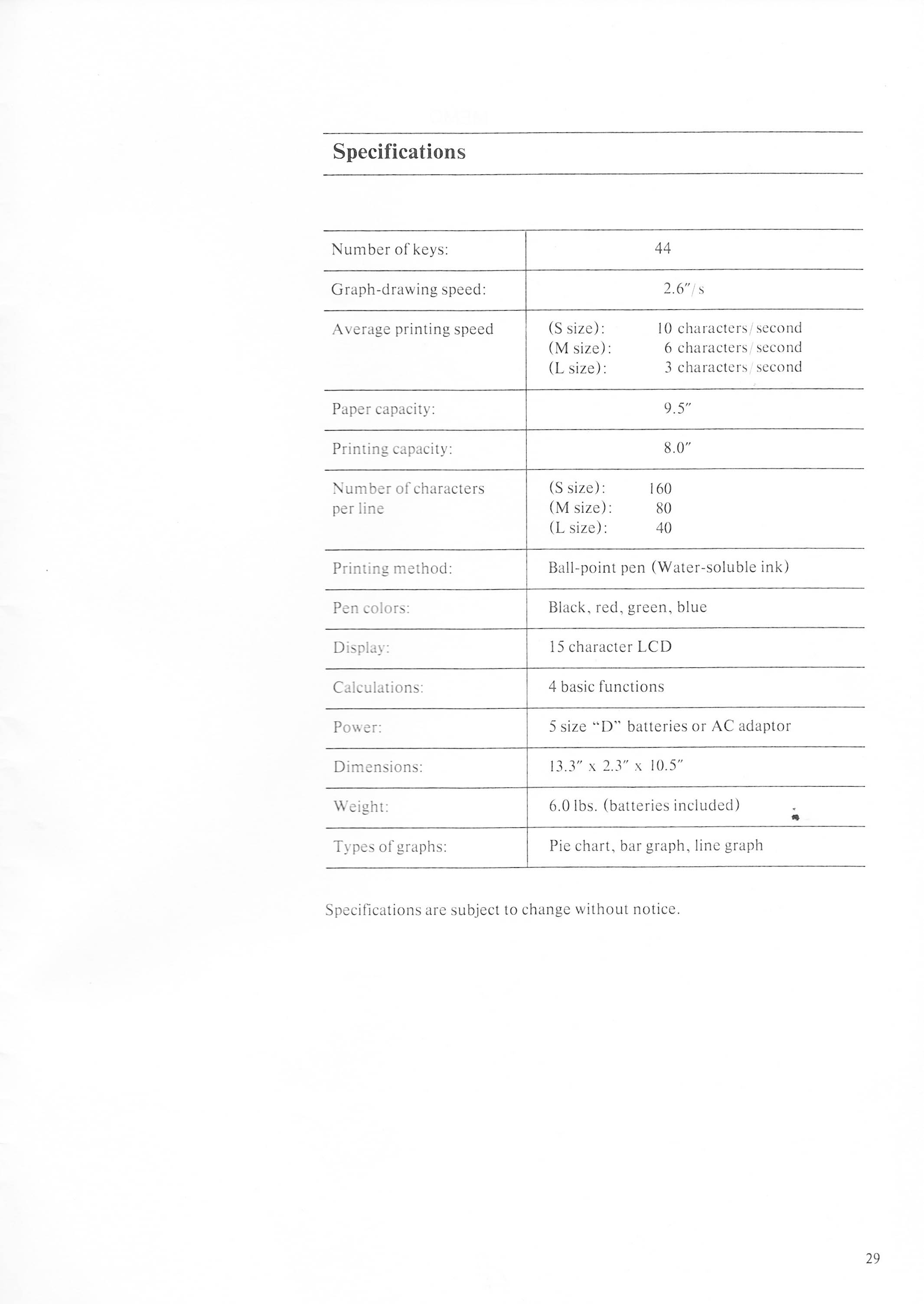
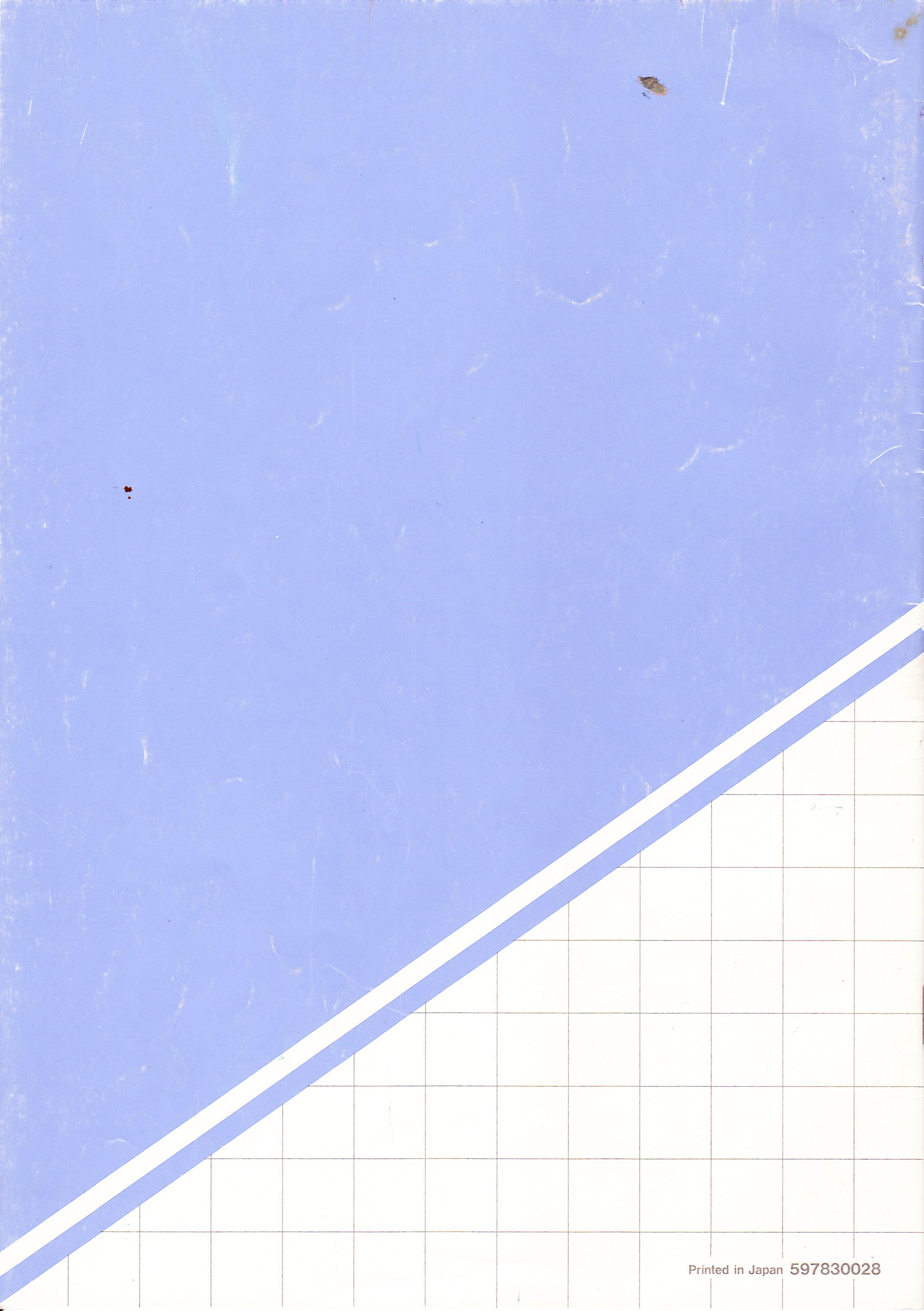
Are you bloody kidding me? Thats the most wacked out idea for a typewriter mechansism (though it reminds me of some mechanical autoauthor thing from centuries ago that I think I read about in a one of Russos books) that i have ever seen. Great job at mcgyvering it though, I wouldnt have expected very good results without original, fresh (pen?) Tips/tubes/cartridges.
Ha, excellent, love it! “Unobtanium”, I guffawwed. Thanks for the manual, thrilled you’re posting this critter on the TWDB. I have a few Brother electrics that I like very much, but this thing is is news to me. Type on! ~TH~
I rather liked unobtanium as well.
What an extraordinary typewriter. Presumably its microprocessor controlled.
I think I’d try cleaning up the original pen tips with meths (aka denatured alcohol) or in an ultrasonic cleaner and then using a solvent based gel type ink to refill the pens using a syringe. Probably a messy business.
Somehow, Ted, this machine is YOU! And I mean that in a nice way! Thanks for sharing this. I hope you can get the pen problem fixed, as I’m certain this would be fun to write with. What about wrapping a bit of tape around the barrel of the Cross pen refill to make it fit more snugly. Or, go to hobby shop or hardware store where you find the K&S Engineering display of brass tubing, and find a brass tube that can work as a spacer sleeve for the Cross refills.
I want one of these so bad now. Have you tried a cut down pencil? This is possibly the coolest typewriter I ever might have walked right past at a thrift shop.
I wonder if your other commenters know that unobtanium is definitely an actual word.
Yep, I did that yesterday, and using thicker-shaft drafting mechanical pencil leads works quite well (and no worry about ink seepage or tips drying out!) see this morning’s post (:
Hi, if you are interested, I have 1* red pen and 1* green pen usable that you can have, plus the not necessarily serviceable set to experiment with. Email me.
I’ve never seen nor heard of one of those before. Sure looks like a fun machine to experiment with.
This really is an intriguing and creative piece of machinery.
As I noted on Facebook, the concept of a machine that draws letters, instead of typing them, dates back to Thurber’s Chirographer of 1845: https://www.google.com/patents/US4271
I still have mine, bought new way back. I also have a similar Panasonic, which is a little more sophisticated, and I think has some memory.It also used short ball point refills. I have a very vague recollection that you could buy refills from a drafting supply house. I think they were used in a type of drafting machine, or maybe a LeRoy lettering machine. I have tried to rejuvenate ball point refills by twirling them at a high rate of speed. I’ve thought of rigging a salad spinner to see if centrifugal force can force the ink down to the point.
I owned an Atari 1020 plotter which used similar pens. There was a trick to refill them. Throw a pen into hot water. You will see little bubbles come out of it. Then throw the pen into an ink-bath and while cooling down it will draw in the ink.
I’ve used that trick to get oil into a sealed electric clock motor, except I used a soldering iron to heat it up, then put a drop over the hole, and it will suck in the hole as it cools.
Ted, if there is a felt insert in the barrel, and it is dried up, maybe you only need to get some water inside to moisten the felt. There might be enough pigment or dye remaining to make it print.
Hi, if you are interested I have 1* red and 1* green pen, unused, that print. If you want the original old pens too, you can have them also.
There exists a cousin to this machine by Silver Reed– the EB50. I acquired it several years ago. You could also control it via a computer through a parallel port. It also took the same exact pens this one did (and as other mentioned many other small plotters at the time like the Atari 1020, Commodore 1520, etc). http://biosrhythm.com/?p=842
ooh, that’s very interesting – I’ll keep my eye out for one. I use a pair of Brother EP-44’s as serial printers for my retrocomputing needs, but one of these plotters with a Centronics connection would be an interesting toy (:
I just found one of these and bought it for a dollar. Knew it was obviously used for graphs but had no idea how else to use it so I’m glad I stumbled across this blog. Waiting to find a compatible cord or bite the bullet and just buy some D batteries for it. Fingers crossed to hoping it works either way!
That mechanism was used in a LOT of little printers and plotters, and the pens are still available! http://www.lass-shop.de/epages/63686166.sf/de_DE/?ObjectPath=/Shops/63686166/Products/%22US%20017.01%22
wowser, 22 euros plus shipping from Germany, looks like. Think I’ll stick with my handmade pencil tips for now. Thanks, though! (:
I had one of these in high school. I was just trying to describe it to my husband and lo, was delighted to find your fun site! I’m not sure what happened to my typewriter; I suspect I got rid of it when the pens became hard to find. Then computers came along… Thanks for a fun reminder :)
I have the brother typewriter BP-30 but I’m on the search for ink if anyone knows where I can buy thank you.
Very interesting equipment, you get impressed what man have made, simple and effective:-)
B.t.w. You can get the pens from Klaus Böttcher i Germany, https://goo.gl/h7M3He or http://plotterstifte-faserschreibfedern.de/
The pens is still used in common medical equipment, so they aren’t going to run out soon:-)
Thank you for putting it on the web.
Just in case you are interested: There is a brilliant and relatively simple Instructable (within which I found the link to this page) that describes how to create a small machine that not only quasi-mimics this device, but in many ways surpasses it at: https://www.instructables.com/id/Homework-Writing-Machine/?utm_source=newsletter&utm_medium=email
I have one of these that is still like new with the owner’s manual. My parents gave it to me when I was in the 9th grade for Christmas. I loved it back then. Please let me know if you find a fix for the ink points. O did so many reports and graphs with this when I was in high school.
I remember doing graphs with it. But I don’t remember how I did it.
Just acquired the Sears/LXI branded variant and just impulsively bought a sealed NIB set of 4 Brother pens in black. They should arrive next week – I’ll let you know if they work!
can’t wait! (:
where did you get the pens?
The plotter in the Sharp MZ731 computer from about the same time used veeerrryy similar pens.
https://www.sharpmz.no/articles/the-mz-series/mz-700/mz-700-plotter/
Same?
Not sure. I do know that the pens for the Atari pen plotter look exactly the same but are about 3mm too short, and don’t work. :P
Ok, I mic’d them out, and the Atari pens are the same size as the Sharp ones, and appear to be identical: 23.3mm long. The pens for the BP-30 are 25mm long, so the Atari pens (and probably the Sharp ones) don’t touch the paper when the mechanism engages them – when used in the Type-O-Graph.
Oh wow! That’s interesting. They sure look the same. I’ll have to think about that … I’ve seen one advertised cheap and was planning to hack together some pens … you’re advice is again invaluable!
heh, yeah, that’s how I ended up with a fresh set each of color & black Atari pens that I can’t use. They look so similar that I jumped to an erroneous conclusion. :P
Getting ready to move and found my never used Graph writer behind a dresser. If you want it it is yours for the shipping.
Otherwise going to donate to my friend’s son who is a genius autistic computer whiz who might make something out of it.
Just let me know.
Oh, I will always suggest a kid get an interesting machine rather than shipping it off to me. Invest in the imaginations of the young, I say (:
OK. I will do that. Is is alright if I pass on your contact/link to him?
You have done so many interesting manipulations that would probably help him a lot.
I don’t know what his online name is, but I will get it if you want to be sure that he is the person who is contacting you.
sure, basically I’ve posted all I know about the machine in this post and the next one:
https://munk.org/typecast/2016/11/20/pencil-tips-for-the-type-o-graph/
Other than that, I’ve since found out that Atari plotter pens don’t work in it despite being an identical Alps mechanism, so I still don’t have any reliable pens for mine. It sits collecting dust as a curiosity for now.. (: